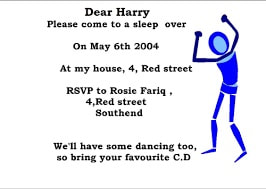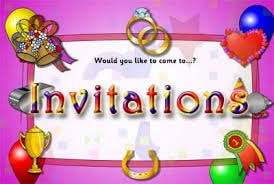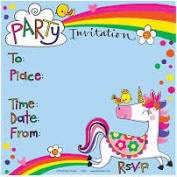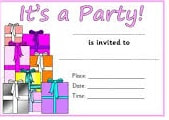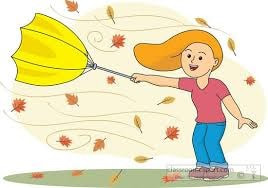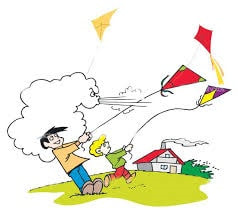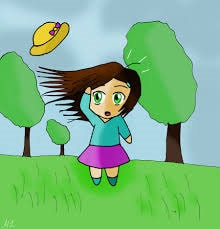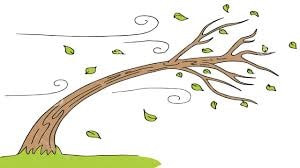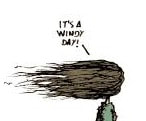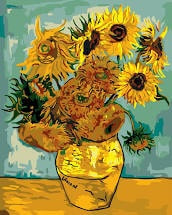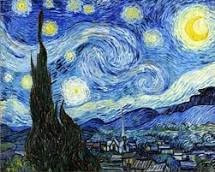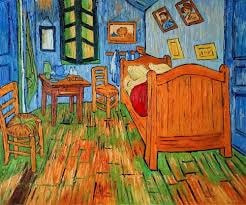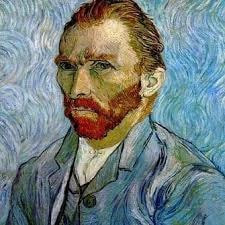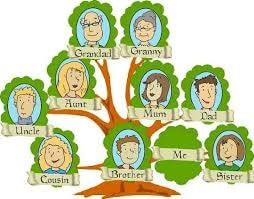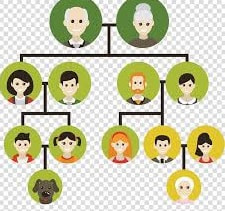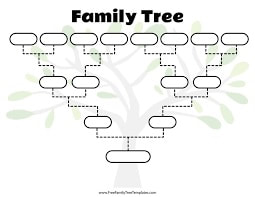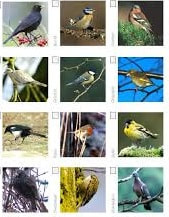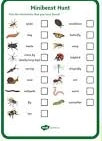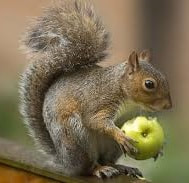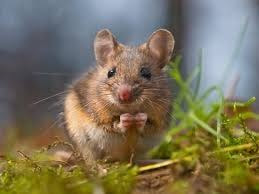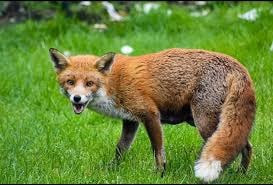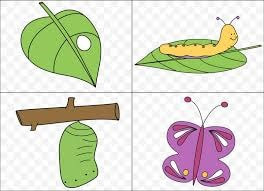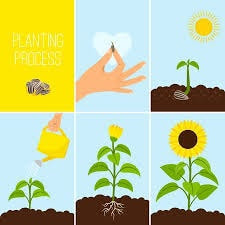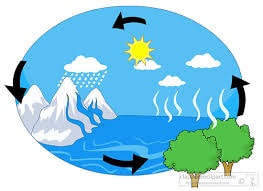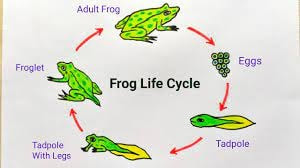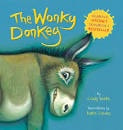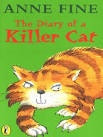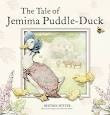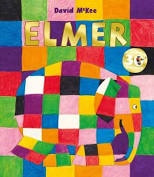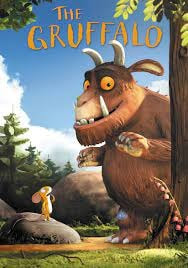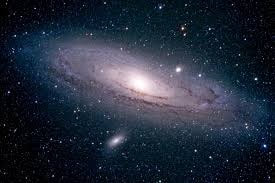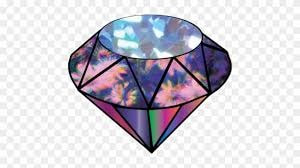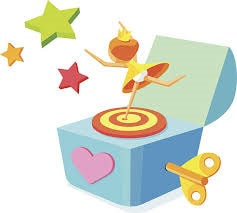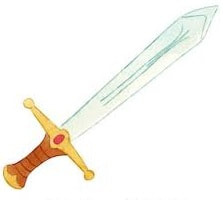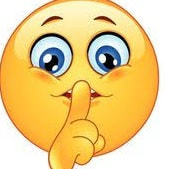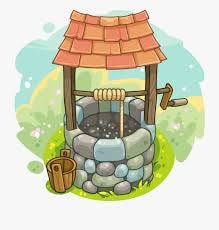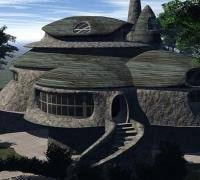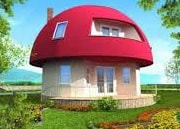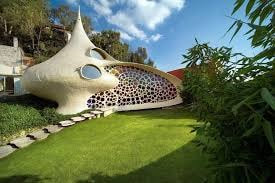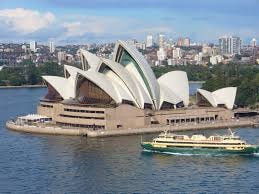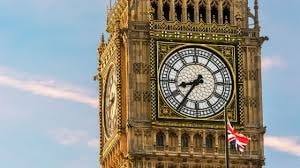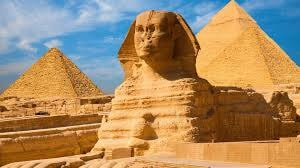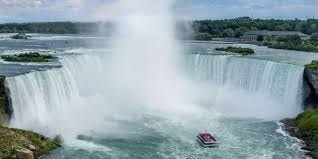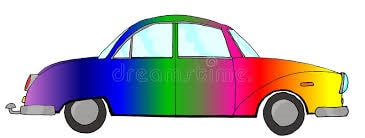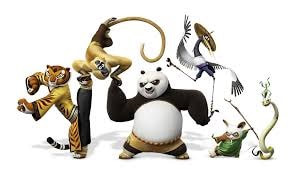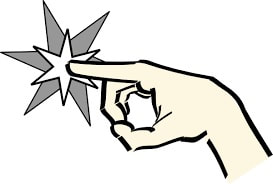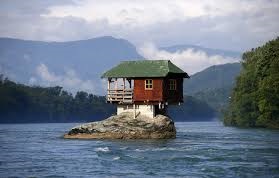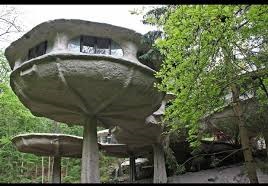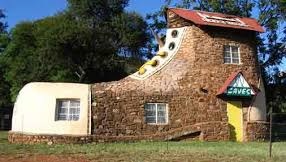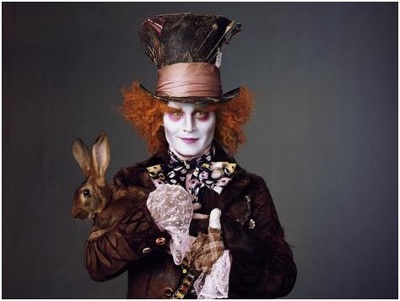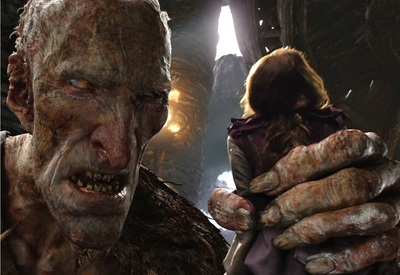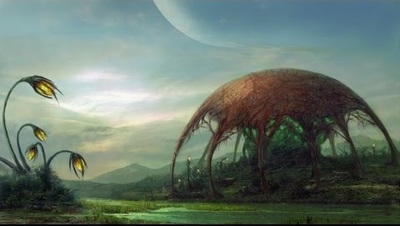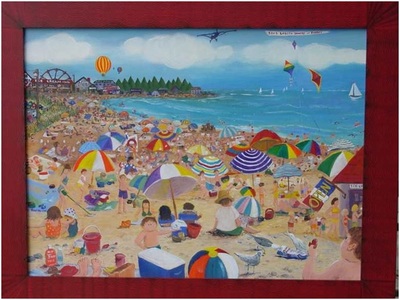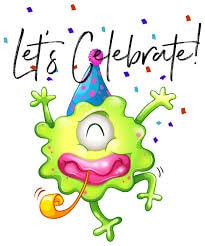
LET'S CELEBRATE!
Plan a celebration for you and your family.
Things to think about:
1. Place: home or another venue.
2. Inside or outside depending on the weather.
3. Who to invite?
4. Food/ Drink?
5. Entertainment - music/ games/ etc.
6. Time length. from when to when?
Why not design a poster advertising what you are planning. You could distribute these by post or by internet or put one up in your house. Remember to make this bright, bold and persuasive.
Why not design an invitation card, again which you could send through the post or post on social media. Remember to family and friends only.
Plan a celebration for you and your family.
Things to think about:
1. Place: home or another venue.
2. Inside or outside depending on the weather.
3. Who to invite?
4. Food/ Drink?
5. Entertainment - music/ games/ etc.
6. Time length. from when to when?
Why not design a poster advertising what you are planning. You could distribute these by post or by internet or put one up in your house. Remember to make this bright, bold and persuasive.
Why not design an invitation card, again which you could send through the post or post on social media. Remember to family and friends only.
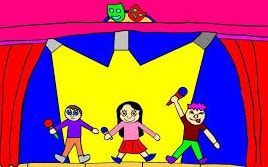
WRITING A PLAYSCRIPT.
Story telling can be done in a play. It is usually performed on a stage where actors act the story out. You will need to write the story in the form of a playscript. A play script is a piece of writing that is written especially for the stage. Within a play script, there will be chapters called acts and those acts will be split into individual scenes that children can act out with one another.
A playscript is all about the dialogue between the characters. It is set out in a unusual way. There are stage directions to help the actor how to say the words written or some that will help them to move around the stage carefully.
Some stage directions describe the scene so that the stage can be set accurately.
Even though there is lots of speech in a playscript inverted commas or speech marks are not used! There would be too many!
You will need a list of the characters at the beginning.
Here is an example of how a playscript is set out.
Title : Little Red Riding Hood.
Characters:
Little Red Riding Hood Mum Wolf Grandma Huntsman.
Scene 1.
Mum and Red Riding Hood are sitting at a table in a cottage kitchen. They are eating breakfast. Under the window is a table with a basket sitting on top of it. There is a red cloak hanging on the wall.
Mum: ( pointing to a basket ) Later this morning I want you to take a basket of goodies to your
Grandma's cottage.
Red Riding Hood: ( looks at the basket; puzzled) Why? Is she not well?
( Mum stands and walks over to the table , picks up the basket and places it in front of Red Riding Hood.)
Mum: ( sighs) She's been very tired lately after her accident and hasn't been able to go to the shops.
(Red Riding Hood walks over to the wall and takes a red cloak which is hanging there.)
Red Riding Hood : ( Puts the cloak on) I'll go straight away. It's a little cold this morning but my cloak will keep me warm.
Red Riding Hood picks up the basket and kisses her Mum goodbye. )
Mum: ( sternly) Don't dawdle and keep to the path!
Red Riding Hood exits stage left sighing.
So over to you. You could finish this playscript or start one of your own.
It can be based on a story that you already know or you could create a new one entirely. Up to you. Good luck!
Story telling can be done in a play. It is usually performed on a stage where actors act the story out. You will need to write the story in the form of a playscript. A play script is a piece of writing that is written especially for the stage. Within a play script, there will be chapters called acts and those acts will be split into individual scenes that children can act out with one another.
A playscript is all about the dialogue between the characters. It is set out in a unusual way. There are stage directions to help the actor how to say the words written or some that will help them to move around the stage carefully.
Some stage directions describe the scene so that the stage can be set accurately.
Even though there is lots of speech in a playscript inverted commas or speech marks are not used! There would be too many!
You will need a list of the characters at the beginning.
Here is an example of how a playscript is set out.
Title : Little Red Riding Hood.
Characters:
Little Red Riding Hood Mum Wolf Grandma Huntsman.
Scene 1.
Mum and Red Riding Hood are sitting at a table in a cottage kitchen. They are eating breakfast. Under the window is a table with a basket sitting on top of it. There is a red cloak hanging on the wall.
Mum: ( pointing to a basket ) Later this morning I want you to take a basket of goodies to your
Grandma's cottage.
Red Riding Hood: ( looks at the basket; puzzled) Why? Is she not well?
( Mum stands and walks over to the table , picks up the basket and places it in front of Red Riding Hood.)
Mum: ( sighs) She's been very tired lately after her accident and hasn't been able to go to the shops.
(Red Riding Hood walks over to the wall and takes a red cloak which is hanging there.)
Red Riding Hood : ( Puts the cloak on) I'll go straight away. It's a little cold this morning but my cloak will keep me warm.
Red Riding Hood picks up the basket and kisses her Mum goodbye. )
Mum: ( sternly) Don't dawdle and keep to the path!
Red Riding Hood exits stage left sighing.
So over to you. You could finish this playscript or start one of your own.
It can be based on a story that you already know or you could create a new one entirely. Up to you. Good luck!
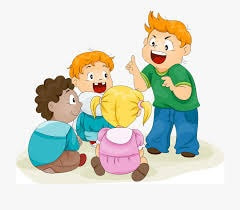
STORY TELLING!
No writing here! No book to help!
Just tell a story to someone in your family or a friend. You could Skype, Facetime or Zoom your story.
It can be one that you already know or one that you have read recently.
It could be one that you have enjoyed or your favourite story of all time!
You could make the story up as you go along.
Whatever you decide to do, make sure that you tell it in an expressive way.
No writing here! No book to help!
Just tell a story to someone in your family or a friend. You could Skype, Facetime or Zoom your story.
It can be one that you already know or one that you have read recently.
It could be one that you have enjoyed or your favourite story of all time!
You could make the story up as you go along.
Whatever you decide to do, make sure that you tell it in an expressive way.
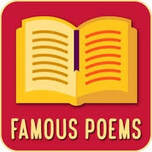
READING CHALLENGE!
Have you ever heard of the narrative poem,' The Pied Piper of Hamelin.' by Robert Browning?
It is a story type poem about a town over run by rats. A piper arrives in town and says that he can rid the town of the vermin, which he does. However there is a twist to the tale!
Although it is a long poem; It really is a good read.
Why not try to find it online or you may have it in a poetry book already at home.
Why not create a cartoon or comic version of the poem? Draw pictures and add your own words to tell the story.
You could do this for another famous poem, 'The Owl and the Pussy Cat.' by Edward Lear.
Or why not check out 'Old Possum's Book of Practical Cats' by TS Eliot. There are so many different cat story poems for you choose from.
Why not read a poem called, 'The Night Mail' by WH Auden. It is famous for its rhythm. If read accurately it sounds like the chugging of a steam train. See if you can find a short film version of the poem and listen to the rhythm as it is read out.
Have you ever heard of the narrative poem,' The Pied Piper of Hamelin.' by Robert Browning?
It is a story type poem about a town over run by rats. A piper arrives in town and says that he can rid the town of the vermin, which he does. However there is a twist to the tale!
Although it is a long poem; It really is a good read.
Why not try to find it online or you may have it in a poetry book already at home.
Why not create a cartoon or comic version of the poem? Draw pictures and add your own words to tell the story.
You could do this for another famous poem, 'The Owl and the Pussy Cat.' by Edward Lear.
Or why not check out 'Old Possum's Book of Practical Cats' by TS Eliot. There are so many different cat story poems for you choose from.
Why not read a poem called, 'The Night Mail' by WH Auden. It is famous for its rhythm. If read accurately it sounds like the chugging of a steam train. See if you can find a short film version of the poem and listen to the rhythm as it is read out.
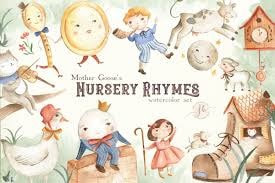
NURSERY RHYMES AREN'T JUST FOR YOUNGSTERS!
I'm sure that a some of you, especially in the Juniors, might not believe the statement above but I think that you can use a nursery rhyme in a creative way.
Check out my list below:
I'm sure that a some of you, especially in the Juniors, might not believe the statement above but I think that you can use a nursery rhyme in a creative way.
Check out my list below:
QUIZ NURSERY RHYMES.
1. Which is the oldest nursery rhyme?
2.Which nursery rhymes are based on truth?
3. Can you find out the names of any writers who wrote nursery rhymes?
4. How many nursery rhymes do you know? Write a list.
5. Find out and write down the top 10 of popular nursery rhymes.
1. Which is the oldest nursery rhyme?
2.Which nursery rhymes are based on truth?
3. Can you find out the names of any writers who wrote nursery rhymes?
4. How many nursery rhymes do you know? Write a list.
5. Find out and write down the top 10 of popular nursery rhymes.
STORY NURSERY RHYMES.
1. Write the story behind the Humpty Dumpty nursery rhyme.
2. Write a story that explains Little Bo Peep's problem with her sheep. Is there a happy ending?
3. Write the real story behind 'Ring a ring a roses'.
4. Why did Jack have to be nimble and quick? Why did he have to jump over the candle stick. Write his story from his point of view.
Remember all stories have to have:
1. A beginning, where you set the scene and introduce the main character.
2. A middle section where most of the action takes place and the problem arises.
3. The end or conclusion of the story should solve the problem satisfactorily tying up any loose ends.
1. Write the story behind the Humpty Dumpty nursery rhyme.
2. Write a story that explains Little Bo Peep's problem with her sheep. Is there a happy ending?
3. Write the real story behind 'Ring a ring a roses'.
4. Why did Jack have to be nimble and quick? Why did he have to jump over the candle stick. Write his story from his point of view.
Remember all stories have to have:
1. A beginning, where you set the scene and introduce the main character.
2. A middle section where most of the action takes place and the problem arises.
3. The end or conclusion of the story should solve the problem satisfactorily tying up any loose ends.
NEWSPAPER NURSERY RHYMES .
1. Create a newspaper report about the incident on the Jack and Jill hill.
2. Create a newspaper report about who frightened Little Miss Muffet
3. Write newspaper report about the over crowding in the old woman's shoe.
4. Who stole Old Mrs Hubbard's dog bone? Write a newspaper report on the incident.
Remember that a newspaper report are usually written in the present tense. Although if you begin with yesterday, then past tense is better.
They must include the 5 W questions and to make them interesting, add an eye witness account of the event or an interview and a quote from another person who may have been involved.
1. Create a newspaper report about the incident on the Jack and Jill hill.
2. Create a newspaper report about who frightened Little Miss Muffet
3. Write newspaper report about the over crowding in the old woman's shoe.
4. Who stole Old Mrs Hubbard's dog bone? Write a newspaper report on the incident.
Remember that a newspaper report are usually written in the present tense. Although if you begin with yesterday, then past tense is better.
They must include the 5 W questions and to make them interesting, add an eye witness account of the event or an interview and a quote from another person who may have been involved.
WEATHER!
I have just returned from my daily exercise walk and wow was it windy! And that made me think what a great subject to write about.
Look at the illustrations above and use them to help you.
You could create a poem - a verse for each picture.
You could describe the scene in the picture.
Describe a walk you may have had during a windy day.
You could use each picture as a story start or combine them all to make a funny story about 'A Windy Day!'.
You could repeat all the above for different weather conditions such as rain, fog snow or sunshine.
I have just returned from my daily exercise walk and wow was it windy! And that made me think what a great subject to write about.
Look at the illustrations above and use them to help you.
You could create a poem - a verse for each picture.
You could describe the scene in the picture.
Describe a walk you may have had during a windy day.
You could use each picture as a story start or combine them all to make a funny story about 'A Windy Day!'.
You could repeat all the above for different weather conditions such as rain, fog snow or sunshine.
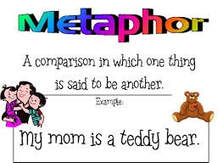
A FUN WAY TO PRACTISE METAPHORS!
Look at the list of categories and think about what you would describe your Mum if she was one of them . You could expand the list to add other categories or write two examples for each one.
1. a toy My Mum is a teddy bear
2. a type of weather My Mum is a fluffy cloud in a bright blue sky.
3 a piece of furniture My Mum is a comfortable armchair, soft and cuddly.
4. a season My Mum is a summer's evening, warm and relaxing.
5. a car My Mum is a Volvo, safe and secure.
My Mum is a dream filled with love and happiness.
My Mum is a beautiful princess.
My Mum is a priceless diamond.
My Mum is a soft fluffy jumper.
Obviously your Mum isn't actually one of these things. You have just compared her to something else that has the characteristics of your Mum.
Why not try a Mum metaphor poem yourself.
You could do one for your brother or sister!
Here's another idea - On Father's Day, why not make a card and write your own Dad Metaphor poem inside.
Don't forget to illustrate it as well.
Look at the list of categories and think about what you would describe your Mum if she was one of them . You could expand the list to add other categories or write two examples for each one.
1. a toy My Mum is a teddy bear
2. a type of weather My Mum is a fluffy cloud in a bright blue sky.
3 a piece of furniture My Mum is a comfortable armchair, soft and cuddly.
4. a season My Mum is a summer's evening, warm and relaxing.
5. a car My Mum is a Volvo, safe and secure.
My Mum is a dream filled with love and happiness.
My Mum is a beautiful princess.
My Mum is a priceless diamond.
My Mum is a soft fluffy jumper.
Obviously your Mum isn't actually one of these things. You have just compared her to something else that has the characteristics of your Mum.
Why not try a Mum metaphor poem yourself.
You could do one for your brother or sister!
Here's another idea - On Father's Day, why not make a card and write your own Dad Metaphor poem inside.
Don't forget to illustrate it as well.
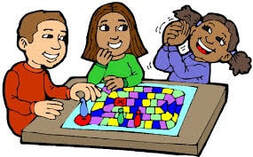
INVENT YOUR OWN BOARD GAME.
This is a fun activity. You can base your idea on any game that you already play such as a simple snakes and ladders type of game or you could be more creative.
Choose a theme. Here anything goes.
1. Mice going to fetch the cheese, over coming obstacles and being foiled by a cat.
2. Find the pirates treasure; again over coming obstacles in the way.
3. You might want to create a Math's solving game or an English grammar game!
Who knows? The sky's the limit.
Remember once you have an idea, plan the game carefully.
You will need a set of rules and an explanation of how to play the game. (This is where the writing comes in!) You will need counters and any other equipment, such as dice and timers.
You will need a board, bright and bold to attract players.
Once you have everything ready then all you need are players! Good luck!
This is a fun activity. You can base your idea on any game that you already play such as a simple snakes and ladders type of game or you could be more creative.
Choose a theme. Here anything goes.
1. Mice going to fetch the cheese, over coming obstacles and being foiled by a cat.
2. Find the pirates treasure; again over coming obstacles in the way.
3. You might want to create a Math's solving game or an English grammar game!
Who knows? The sky's the limit.
Remember once you have an idea, plan the game carefully.
You will need a set of rules and an explanation of how to play the game. (This is where the writing comes in!) You will need counters and any other equipment, such as dice and timers.
You will need a board, bright and bold to attract players.
Once you have everything ready then all you need are players! Good luck!

JUMBLED SENTENCES ( for younger children)
Read out the sentences. Ask the children to rearrange the jumbled up words so that the sentence makes sense.
Again this could be done as a simple talking activity or a writing one.
1. in The ill is boy bed. 5. a eating was dog bone. The
2. sheep. We from wool get 6. This a is book. girl reading 3. very donkey A ears. long has 7. a has tail. monkey The long
4. tree. The in cat the up is 8. and Mum go shopping. Dad
This type of exercise is good to reinforce capital letters and full stops in sentences. Look for the clues.
Again the children could draw pictures to match each sentence.
Read out the sentences. Ask the children to rearrange the jumbled up words so that the sentence makes sense.
Again this could be done as a simple talking activity or a writing one.
1. in The ill is boy bed. 5. a eating was dog bone. The
2. sheep. We from wool get 6. This a is book. girl reading 3. very donkey A ears. long has 7. a has tail. monkey The long
4. tree. The in cat the up is 8. and Mum go shopping. Dad
This type of exercise is good to reinforce capital letters and full stops in sentences. Look for the clues.
Again the children could draw pictures to match each sentence.

SENTENCE MATCHING. ( for younger children)
Look at the beginning of the sentence and find the correct ending.
This could be:
a) a simple discussion type exercise.
b) you could ask the children to draw a picture and copy the sentence under it.
c) write down the complete sentence as a neat handwriting exercise.
1. The leaves were falling are brother and sister.
2. Sam and Sue are go to the seaside.
3. The cat lapped up from the trees.
4. The giraffe has all the milk.
5. In summer many people has long neck.
Look at the beginning of the sentence and find the correct ending.
This could be:
a) a simple discussion type exercise.
b) you could ask the children to draw a picture and copy the sentence under it.
c) write down the complete sentence as a neat handwriting exercise.
1. The leaves were falling are brother and sister.
2. Sam and Sue are go to the seaside.
3. The cat lapped up from the trees.
4. The giraffe has all the milk.
5. In summer many people has long neck.
ART SETS.
Although I have suggested that you paint pictures for this set of activities, felt tips, wax or pencil crayons, oil pastels or chalk pastels will work just as well. In fact why don't you experiment using a combination of them in your work.
Although I have suggested that you paint pictures for this set of activities, felt tips, wax or pencil crayons, oil pastels or chalk pastels will work just as well. In fact why don't you experiment using a combination of them in your work.
VINCENT VAN GOGH!
Vincent Van Gogh was a famous impressionist. artist. Above are 4 of his most famous paintings. He did many self portraits ( you would call them selfies today!)
Here are some ideas for you to try.
1. Create a sketch/painting book which has half a page of research writing about Van Gogh, his life and his art work, and the other half a picture of one of his paintings. You could copy and paste and then print a picture for your booklet.
2. Look at the painting of Van Gogh's bedroom. You could draw or paint a picture of your bedroom and write a description of it.
3. Look carefully at yourself in a mirror and draw a picture of what you see. Now write about yourself. What are your hobbies? What are your favourite things? Which sports do you like? favourite foods? What makes you laugh or sad or angry?
4. Look around your house for any vases of flowers real or synthetic. Paint them. Look carefully at the shapes and textures of the petals and leaves. Write a poem about the flowers.
5. The landscape painting is called Starry, Starry Night. Why don't you copy it? Look carefully at the swirls and whirls of the night sky and how the cypress trees seem to sway.
Write a story called Starry, Starry Night.
Vincent Van Gogh was a famous impressionist. artist. Above are 4 of his most famous paintings. He did many self portraits ( you would call them selfies today!)
Here are some ideas for you to try.
1. Create a sketch/painting book which has half a page of research writing about Van Gogh, his life and his art work, and the other half a picture of one of his paintings. You could copy and paste and then print a picture for your booklet.
2. Look at the painting of Van Gogh's bedroom. You could draw or paint a picture of your bedroom and write a description of it.
3. Look carefully at yourself in a mirror and draw a picture of what you see. Now write about yourself. What are your hobbies? What are your favourite things? Which sports do you like? favourite foods? What makes you laugh or sad or angry?
4. Look around your house for any vases of flowers real or synthetic. Paint them. Look carefully at the shapes and textures of the petals and leaves. Write a poem about the flowers.
5. The landscape painting is called Starry, Starry Night. Why don't you copy it? Look carefully at the swirls and whirls of the night sky and how the cypress trees seem to sway.
Write a story called Starry, Starry Night.
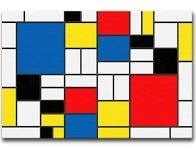
FAMOUS ARTISTS!
There are many artists who look at the world in a different way . Why don't you do some research on the following artists and then again try your own version of their style. The artists are:
1. Piet Mondrian ( see the picture)
2. Jackson Pollack.
3. Henri Matisse
4. Bridget Riley
5. Salvador Dali
Write a brief account of their lives or simply write down ten interesting facts about them.
There are many artists who look at the world in a different way . Why don't you do some research on the following artists and then again try your own version of their style. The artists are:
1. Piet Mondrian ( see the picture)
2. Jackson Pollack.
3. Henri Matisse
4. Bridget Riley
5. Salvador Dali
Write a brief account of their lives or simply write down ten interesting facts about them.
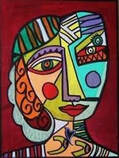
FAMOUS ARTISTS!
This painting is by Pablo Picasso. As you can see his view of people was different to the way that other see them.
Find the answers to the following questions and find out a little bit more about who he was.
1. Where and when was he born?
2. What is cubism?
3. Picasso had a blue period. What was this?
4. What is Guernica?
5. How much would a Picasso piece of art be worth?
NOW OVER TO YOU. WHY DONT YOU DRAW OR PAINT A PICTURE YOURSELF IN THE STYLE OF PICASSO.? IT COULD BE FUN!
Why not write a five line poem about how you feel when you look at your drawing.
Here's my example of looking at Picasso's painting above.
With your tilted head
and one eye closed
I look at you
and smile.
What a happy, multi-coloured person you are.
This painting is by Pablo Picasso. As you can see his view of people was different to the way that other see them.
Find the answers to the following questions and find out a little bit more about who he was.
1. Where and when was he born?
2. What is cubism?
3. Picasso had a blue period. What was this?
4. What is Guernica?
5. How much would a Picasso piece of art be worth?
NOW OVER TO YOU. WHY DONT YOU DRAW OR PAINT A PICTURE YOURSELF IN THE STYLE OF PICASSO.? IT COULD BE FUN!
Why not write a five line poem about how you feel when you look at your drawing.
Here's my example of looking at Picasso's painting above.
With your tilted head
and one eye closed
I look at you
and smile.
What a happy, multi-coloured person you are.
CREATE YOUR FAMILY TREE!
Above are a selection of different ways that you could record your information depending on your age.
For younger children then a simple word tree would be a good start.
For example me Susan sister Donna
Mum Beryl Dad Joe.
Nanna Lucy Grandad Walter
Grandma Elizabeth Grandad Joseph.
This could be written down or photographs would be another way to record the information. You could keep on adding to this to include aunts, uncles and cousins.
For those of you who are older, more information could be gathered and the chart could be more detailed.
Here's a way to start:
First write down your birthdate.
Then find out when your brothers or sisters were born.
Ask your parents and grandparents the same questions.
You will need their brothers and sisters information as well!
Now you have all the information that you need to create your family tree.
Do some research on how to set out family trees and the different types of information that could be included.
Above are a selection of different ways that you could record your information depending on your age.
For younger children then a simple word tree would be a good start.
For example me Susan sister Donna
Mum Beryl Dad Joe.
Nanna Lucy Grandad Walter
Grandma Elizabeth Grandad Joseph.
This could be written down or photographs would be another way to record the information. You could keep on adding to this to include aunts, uncles and cousins.
For those of you who are older, more information could be gathered and the chart could be more detailed.
Here's a way to start:
First write down your birthdate.
Then find out when your brothers or sisters were born.
Ask your parents and grandparents the same questions.
You will need their brothers and sisters information as well!
Now you have all the information that you need to create your family tree.
Do some research on how to set out family trees and the different types of information that could be included.
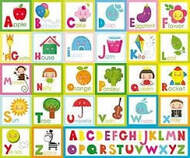
ALPHABET CHART!
Many alphabet charts show the letter and a picture or word starting with that letter. I'm sure that you have seen examples of them such as ,
A is for apple B is for ball C is for cat and so on.
Why not create your own alphabet chart with words of your own.
Try to be as creative as you can.
Use words that are modern and are used now, for example:
G is for games console P is for pizza X is for x-box Dis for Disney M is for mobile phone
Or you could create a themed alphabet chart such as;:
superheroes,
pirates,
football teams or players
The list endless.
I challenge you to create the most fun and interesting alphabet chart of all time!!
Many alphabet charts show the letter and a picture or word starting with that letter. I'm sure that you have seen examples of them such as ,
A is for apple B is for ball C is for cat and so on.
Why not create your own alphabet chart with words of your own.
Try to be as creative as you can.
Use words that are modern and are used now, for example:
G is for games console P is for pizza X is for x-box Dis for Disney M is for mobile phone
Or you could create a themed alphabet chart such as;:
superheroes,
pirates,
football teams or players
The list endless.
I challenge you to create the most fun and interesting alphabet chart of all time!!
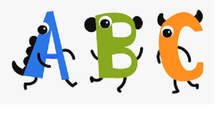
CREATIVE ALPHABET !
Here are some fun activities using the letters of the alphabet.
Why not try them out?
1. Look at the picture and make your own letter designs around each letter.
2. Decorate the letters of your name using your favourite colours.
3. Check out the following web page to find a lesson plan about illuminating letters. Interesting and fun!
https://www.maped-creativ.com/en/illuminated-letters-lesson-plan/
Here are some fun activities using the letters of the alphabet.
Why not try them out?
1. Look at the picture and make your own letter designs around each letter.
2. Decorate the letters of your name using your favourite colours.
3. Check out the following web page to find a lesson plan about illuminating letters. Interesting and fun!
https://www.maped-creativ.com/en/illuminated-letters-lesson-plan/
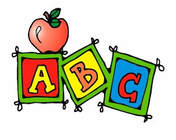
QUICK ALPHABET QUIZ
Everyone knows the alphabet -right?
Here's a quick practice quiz to check your knowledge
1. What is the 5th letter? 6. Write the two letters on either side of e.
2. Write the last letter. 7. Which letter is next but one after q?
3. Which letter comes next after s? 8. Which letter next but one before j?
4.Which letter comes just before h? 9. missing letters? m, n, - p q r - t, u - x
5. Write the letter that comes in between k and m. 10. Order? I k h g f j d f b a e c
Write out the letters of the alphabet;
1. In CAPITAL letters, 2. Your neatest handwriting. 3. Bubble letters and colour them.
Everyone knows the alphabet -right?
Here's a quick practice quiz to check your knowledge
1. What is the 5th letter? 6. Write the two letters on either side of e.
2. Write the last letter. 7. Which letter is next but one after q?
3. Which letter comes next after s? 8. Which letter next but one before j?
4.Which letter comes just before h? 9. missing letters? m, n, - p q r - t, u - x
5. Write the letter that comes in between k and m. 10. Order? I k h g f j d f b a e c
Write out the letters of the alphabet;
1. In CAPITAL letters, 2. Your neatest handwriting. 3. Bubble letters and colour them.
WILD LIFE AND INSECT INVESTIGATION
Remember to wear gloves when working in the garden.
If you are carrying out an investigation into your garden, then don't forget to look closely at the different types of wild life and insects that you may find there.
Watch for birds who visit your garden.
Make a note of all the birds that you see whilst you are in the garden.
You could photograph them and then find out some information about them.
Look at the ground, especially in soil areas and near the base of trees.
What kinds of insects can you see?
Again try to identify them.
Look at their legs, 6 or 8? Look at their bodies, 2 sections or 3?
Are there any other animals that visit your garden?
Make a sketch of one.
Draw a chart or make a list of all the creatures that visit your garden in one hour. You could do this early in the morning, at mid day and early evening to see if there are any differences.
If there are differences in numbers or kinds of wild life, can you think of why?
Remember to write down your observations and findings in neat handwriting
Remember to wear gloves when working in the garden.
If you are carrying out an investigation into your garden, then don't forget to look closely at the different types of wild life and insects that you may find there.
Watch for birds who visit your garden.
Make a note of all the birds that you see whilst you are in the garden.
You could photograph them and then find out some information about them.
Look at the ground, especially in soil areas and near the base of trees.
What kinds of insects can you see?
Again try to identify them.
Look at their legs, 6 or 8? Look at their bodies, 2 sections or 3?
Are there any other animals that visit your garden?
Make a sketch of one.
Draw a chart or make a list of all the creatures that visit your garden in one hour. You could do this early in the morning, at mid day and early evening to see if there are any differences.
If there are differences in numbers or kinds of wild life, can you think of why?
Remember to write down your observations and findings in neat handwriting
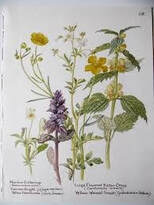
GARDEN INVESTIGATION.
Why not investigate your garden? There are lots of things that you can do especially if the weather is fine.
Look at the plants that you have growing there.
Do you trees, and flowers?
Try to identify them.
Sketch them and write down around your sketch any information that you find.
Look closely at any flowers that grow in your garden.
Sketch a close up of the flower head and its leaves.
Are any of them weeds, or wild flowers?
What are the shapes of their petals? How many petals do they have?
Look closely at their leaves? Describe them.
Do you have a greenhouse? What plants are growing in their?
Find out the name of some famous gardens. Write a leaflet about one of them, persuading people to visit.
Find the name of a famous gardener and write about what he does.
Do some research on different types of gardens eg a Japanese garden.
Capability Brown was a famous garden designer. Research him and write a brief account of his life story.
Why not investigate your garden? There are lots of things that you can do especially if the weather is fine.
Look at the plants that you have growing there.
Do you trees, and flowers?
Try to identify them.
Sketch them and write down around your sketch any information that you find.
Look closely at any flowers that grow in your garden.
Sketch a close up of the flower head and its leaves.
Are any of them weeds, or wild flowers?
What are the shapes of their petals? How many petals do they have?
Look closely at their leaves? Describe them.
Do you have a greenhouse? What plants are growing in their?
Find out the name of some famous gardens. Write a leaflet about one of them, persuading people to visit.
Find the name of a famous gardener and write about what he does.
Do some research on different types of gardens eg a Japanese garden.
Capability Brown was a famous garden designer. Research him and write a brief account of his life story.
SCIENCE WRITING.
Below are 4 diagrams showing different life cycles. Copy each diagram and label it.
Then write a short explanation of what is happening in the diagram.
You might need to do some research to help you.
Explanation texts usually include these features:
Below are 4 diagrams showing different life cycles. Copy each diagram and label it.
Then write a short explanation of what is happening in the diagram.
You might need to do some research to help you.
Explanation texts usually include these features:
- Written in the present tense, in formal language.
- Text arranged into numbered points.
- Sub-headings to separate sections of text.
- Time connectives, such as: first, then, next, later, finally.
- Technical vocabulary (sometimes in bold), for example: if the text is about how a butterfly then words like pupa or metamorphosis might be needed.
- Diagrams with labels or pictures with captions.
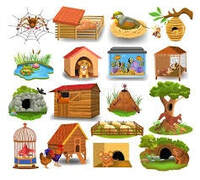
WHERE DO THEY LIVE? ( for younger children)
Young children find it fun to learn about animals.
This activity helps them to find out and learn about where some animals live.
First, go over the list with your child, then ask them to answer the questions.
Creature Home Creature Home
bee hive lion den
bird nest parrot cage
dog kennel pig sty
horse stable spider web
1. A pig lives in a -----. 5. A ------is the home of a spider.
2. A parrot lives in a------- 6. Bees live in a -------
3. A ----------is a dog's home. 7. The lion lives in a -----.
4. The horse lives in a ----------. 8. A bird lives in a -----
This can be done orally or chidden could copy the sentence and write in their answer.
Now for a challenge: Children may have to d some research.
Where does a frog live? Where does a shark live? Where does a rabbit live?
Where does mouse live? Where does a chicken live? Where does a bear live?
Young children find it fun to learn about animals.
This activity helps them to find out and learn about where some animals live.
First, go over the list with your child, then ask them to answer the questions.
Creature Home Creature Home
bee hive lion den
bird nest parrot cage
dog kennel pig sty
horse stable spider web
1. A pig lives in a -----. 5. A ------is the home of a spider.
2. A parrot lives in a------- 6. Bees live in a -------
3. A ----------is a dog's home. 7. The lion lives in a -----.
4. The horse lives in a ----------. 8. A bird lives in a -----
This can be done orally or chidden could copy the sentence and write in their answer.
Now for a challenge: Children may have to d some research.
Where does a frog live? Where does a shark live? Where does a rabbit live?
Where does mouse live? Where does a chicken live? Where does a bear live?

OPPOSITES ( for younger children)
Look at the following words and write down the opposite. Younger children could tell
you the answer.
Here are a few examples :
The opposite of big is small. The opposite of tame is wild. The opposite of day is night.
Now over to you:
1. The opposite of bad is ------. 6. The opposite of new is ------.
2. The opposite of early is ------. 7. The opposite of tall is ------.
3. The opposite of in is -------. 8. The opposite of cold is ------.
4. The opposite of weak is --------. 9. The opposite of hard is -------.
5. The opposite of empty is -------. 10. The opposite of open is --------.
Look at the following words and write down the opposite. Younger children could tell
you the answer.
Here are a few examples :
The opposite of big is small. The opposite of tame is wild. The opposite of day is night.
Now over to you:
1. The opposite of bad is ------. 6. The opposite of new is ------.
2. The opposite of early is ------. 7. The opposite of tall is ------.
3. The opposite of in is -------. 8. The opposite of cold is ------.
4. The opposite of weak is --------. 9. The opposite of hard is -------.
5. The opposite of empty is -------. 10. The opposite of open is --------.
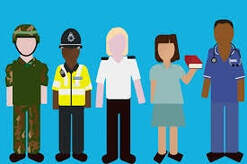
WHAT DO I DO? PUZZLE (for younger children)
Look at the list below and ask the children to tell you or to write a sentence about what jobs these people do.
1. fireman 6. waitress
2. hairdresser 7. vet
3. pilot. 8. teacher
4. policewoman 9.writer ( author)
5. soldier 10. musician
How many other jobs can you think of? Write them down.
Write a story about a day in the life of one of these people.
Remember a story has a beginning, a middle and an end.
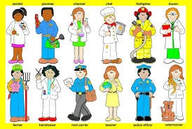
WHO AM I PUZZLE? ( for younger children)
Ask your younger children the following questions. They could tell you the answer, write the answer down or draw a picture of the answer.
1. I bring letters to you home.
2.I try to cure you when you are ill.
3. I bring milk to you door.
4. I take care of your teeth.
5. I go to sea in a ship.
6. I make cakes and bread.
7. I collect rubbish from your home.
8. I help you to learn.
Ask your younger children the following questions. They could tell you the answer, write the answer down or draw a picture of the answer.
1. I bring letters to you home.
2.I try to cure you when you are ill.
3. I bring milk to you door.
4. I take care of your teeth.
5. I go to sea in a ship.
6. I make cakes and bread.
7. I collect rubbish from your home.
8. I help you to learn.
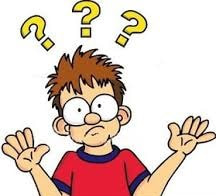
WORD PUZZLE!
If sheep = wool then rabbit= fur. Try to work out the following:
1. Cat = kitten then dog = _______.
2. Dog = bark then lion=________
3. Ship = sea then bus = _________
4. Mr. = Mister then Dr. = __________
5. See = eyes then smell = ________
7. Foot = leg then hand = __________
8.Cow = beef then pig = ____________
9. Sheep = baa then horse = ___________
10. Car= horn then bike = __________
These are easy! Why not try to write a few examples of your own.
If sheep = wool then rabbit= fur. Try to work out the following:
1. Cat = kitten then dog = _______.
2. Dog = bark then lion=________
3. Ship = sea then bus = _________
4. Mr. = Mister then Dr. = __________
5. See = eyes then smell = ________
7. Foot = leg then hand = __________
8.Cow = beef then pig = ____________
9. Sheep = baa then horse = ___________
10. Car= horn then bike = __________
These are easy! Why not try to write a few examples of your own.
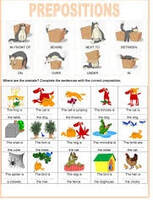
PREPOSITION PRACTICE!
A preposition tells you where something is or when something is happening.
Words like over, next to, behind, under are prepositions.
Copy the following sentences in your neatest handwriting and fill in the missing prepositions.
1. Humpty Dumpty fell ------ the wall.
2. The man dived -----the pool.
3. The horse jumped ------the fence.
4. The dog sat ------the table.
5. There is a bee -----the flower.
6. The chicken is walking-----the road.
7. There are flowers ----the vase.
8. John is hiding ------the chair.
9. There is a metal guard ------the fire.
10. James is standing -----to the window.
Try to use a different preposition for each sentence.
A preposition tells you where something is or when something is happening.
Words like over, next to, behind, under are prepositions.
Copy the following sentences in your neatest handwriting and fill in the missing prepositions.
1. Humpty Dumpty fell ------ the wall.
2. The man dived -----the pool.
3. The horse jumped ------the fence.
4. The dog sat ------the table.
5. There is a bee -----the flower.
6. The chicken is walking-----the road.
7. There are flowers ----the vase.
8. John is hiding ------the chair.
9. There is a metal guard ------the fire.
10. James is standing -----to the window.
Try to use a different preposition for each sentence.
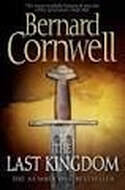
READING CHALLENGE!
Why not escape the humdrum of life and read a book. They can take you to many places and a for a short while you can forget about all your troubles. Why not visit Hogwarts or the land of OZ?
So set yourself a challenge to read at least one new book per month.
I'm reading The Last Kingdom by Bernard Cornwell at the moment about the Vikings invading England at the time of Alfred the Great and I'm loving it!
Why not escape the humdrum of life and read a book. They can take you to many places and a for a short while you can forget about all your troubles. Why not visit Hogwarts or the land of OZ?
So set yourself a challenge to read at least one new book per month.
I'm reading The Last Kingdom by Bernard Cornwell at the moment about the Vikings invading England at the time of Alfred the Great and I'm loving it!
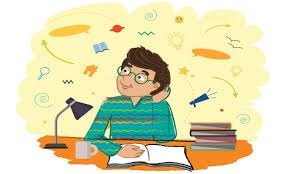
ANIMALS WRITE A STORY!
Why don't you write a story from the animal's point of view. Imagine you are the animal in the adventure. look at my story section for children- you might find one or two there.
GOOD LUCK!
Why don't you write a story from the animal's point of view. Imagine you are the animal in the adventure. look at my story section for children- you might find one or two there.
GOOD LUCK!
Below is a selection of some the story/fiction books that you can find about animals.
The Diary of a Killer Cat Black Beauty Watership Down The Gruffalo
Jemima Puddleduck White Fang Babe
Charlotte's Web Elmer The Wonkey donkey
Who wrote these books. Find out the names of the authors.
Choose one author and write down other books that he or she has written.
Now choose one of these books and read it yourself.
The Diary of a Killer Cat Black Beauty Watership Down The Gruffalo
Jemima Puddleduck White Fang Babe
Charlotte's Web Elmer The Wonkey donkey
Who wrote these books. Find out the names of the authors.
Choose one author and write down other books that he or she has written.
Now choose one of these books and read it yourself.
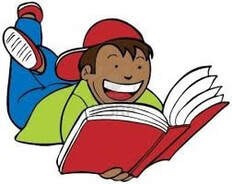
ANIMALS READ A BOOK!
There are so many books out there about animals. Why don't you read one?
You could then write a review and it give it marks / stars out of 5.
You will need to write the title of the book and who wrote it (the author).
A review needs a short account of the story but remember not to reveal any twists or the ending!
Here are some other things to think about and add to your review.
1 .Did you enjoy it?
2. Which parts did you particularly like?
3. If you didn't enjoy it why not?
4. Who do you think would like this book?
5. What age range do you think should read it?
6. How long did it take you to read it?
7. Did you find it easy or difficult to read?
8. Have you read any other books by the same author?
You could swap your book reviews with friends or classmates.
You could read their book and see if you agree or disagree with them about their star rating.
So over to you- keep reading!
There are so many books out there about animals. Why don't you read one?
You could then write a review and it give it marks / stars out of 5.
You will need to write the title of the book and who wrote it (the author).
A review needs a short account of the story but remember not to reveal any twists or the ending!
Here are some other things to think about and add to your review.
1 .Did you enjoy it?
2. Which parts did you particularly like?
3. If you didn't enjoy it why not?
4. Who do you think would like this book?
5. What age range do you think should read it?
6. How long did it take you to read it?
7. Did you find it easy or difficult to read?
8. Have you read any other books by the same author?
You could swap your book reviews with friends or classmates.
You could read their book and see if you agree or disagree with them about their star rating.
So over to you- keep reading!
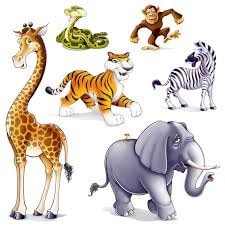
ANIMALS . FUN FACTS!
Nearly everyone has a favourite animal whether it be a giraffe, a lizard, a shark or an ostrich!
Why not write a factual account of your favourite animal. You would need to mention, where it lives, what it eats, who its enemies are. Which parent looks after it when it is young and for how long?
Is your animal or mammal, an insect, or a crustacean? Look up these words if you don't know what they mean.
It is a good idea to try and find at least 10 different facts for your writing.
You could illustrate this report with your own drawings or printed photographs.
Remember, you will need an introduction, at least 3 paragraphs and a conclusion in order to write a good report.
Why not challenge a friend online to write one as well and then you could email your reports to each other.
Have fun!
Nearly everyone has a favourite animal whether it be a giraffe, a lizard, a shark or an ostrich!
Why not write a factual account of your favourite animal. You would need to mention, where it lives, what it eats, who its enemies are. Which parent looks after it when it is young and for how long?
Is your animal or mammal, an insect, or a crustacean? Look up these words if you don't know what they mean.
It is a good idea to try and find at least 10 different facts for your writing.
You could illustrate this report with your own drawings or printed photographs.
Remember, you will need an introduction, at least 3 paragraphs and a conclusion in order to write a good report.
Why not challenge a friend online to write one as well and then you could email your reports to each other.
Have fun!
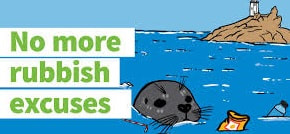
ANIMALS WILD LIFE POSTERS.
Keeping animals safe from litter is an important issue. You may have seen the horrific pictures of the vast amounts of plastic that is thrown away and which becomes a danger to wild life either on land or sea.
Design a poster warning people of the dangers that litter can cause to animals.
You might want to do some research to find facts before you start.
Remember, posters have to be bold, big, easy to read and have a visual impact on the reader.
Go for it!
Keeping animals safe from litter is an important issue. You may have seen the horrific pictures of the vast amounts of plastic that is thrown away and which becomes a danger to wild life either on land or sea.
Design a poster warning people of the dangers that litter can cause to animals.
You might want to do some research to find facts before you start.
Remember, posters have to be bold, big, easy to read and have a visual impact on the reader.
Go for it!
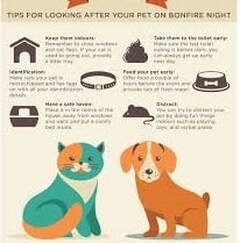
ANIMALS PET POSTER
Bonfire night can be a nightmare for animals and pets. Why not design a poster that will help keep your pet safe at this time of the year.
Before you start make a plan of different ways of how to set out your poster.
Once you have settled on your layout then think about what you want to say.
Will you be able to fit your writing into the space on your plan?
Will you need bubble letters or capital letters to help highlight certain words?
Will you need illustrations to help make the poster eye catching?
What kinds of vocabulary will you use to encourage people to follow the rules?
Once yoy have thought all about these questions then you are ready to create a super poster. Good luck.
Bonfire night can be a nightmare for animals and pets. Why not design a poster that will help keep your pet safe at this time of the year.
Before you start make a plan of different ways of how to set out your poster.
Once you have settled on your layout then think about what you want to say.
Will you be able to fit your writing into the space on your plan?
Will you need bubble letters or capital letters to help highlight certain words?
Will you need illustrations to help make the poster eye catching?
What kinds of vocabulary will you use to encourage people to follow the rules?
Once yoy have thought all about these questions then you are ready to create a super poster. Good luck.

ANIMALS PETS
Many children would love to have a pet. It might be a good idea for
them to find out a little about how to look after one.
Here are a few suggestions for them to research.
1. How to look after a puppy?
2. All you need to know about looking after a kitten.
3. How do you look after a hamster or guinea pig?
4. Look how easy it is to look after a goldfish?
5. All you need to know about looking after a parrot.
Once the children have researched and made some notes, they could divide a piece of paper into 4 or 6 and write out a step by step guide including diagrams or pictures.
Many children would love to have a pet. It might be a good idea for
them to find out a little about how to look after one.
Here are a few suggestions for them to research.
1. How to look after a puppy?
2. All you need to know about looking after a kitten.
3. How do you look after a hamster or guinea pig?
4. Look how easy it is to look after a goldfish?
5. All you need to know about looking after a parrot.
Once the children have researched and made some notes, they could divide a piece of paper into 4 or 6 and write out a step by step guide including diagrams or pictures.
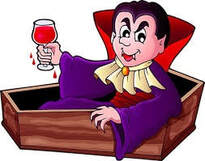
INTERVIEW WITH A VAMPIRE!
Imagine that you have the opportunity to ask a vampire ten questions. What would they be?
Write down the 10 questions and then imagine that you are the vampire and answer them! Simple!
You could also try this with other characters, such as:
1. Interview with Sherlock Holmes.
2. Interview with Robin Hood.
3. Interview with your Mum!
4. Interview with your favourite footballer / pop singer.
5. Interview with Harry Potter.
Imagine that you have the opportunity to ask a vampire ten questions. What would they be?
Write down the 10 questions and then imagine that you are the vampire and answer them! Simple!
You could also try this with other characters, such as:
1. Interview with Sherlock Holmes.
2. Interview with Robin Hood.
3. Interview with your Mum!
4. Interview with your favourite footballer / pop singer.
5. Interview with Harry Potter.
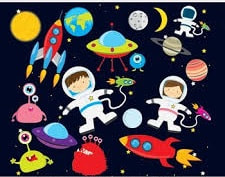
SPACE EXTRAS!
Just a few ideas to encourage you to write about space.
1. Design your own space ship/rocket. Label its features.
2. Design your own space suit. Label its features.
3. Create your own planet and write about it.
4. Create an alien. Describe what it looks like. Which planet does it come from? Where does it live? What does it eat? What language does it have?
5. How many different films do you know that are set in space! Using your neatest handwriting write them down.
6. Write a conversation between an astronaut and an alien. Remember to use speech marks or inverted commas.
7. Buzz Lightyear appears in the Toy Story films, imagine that he was a real space ranger, and describe a day in his life or write a diary about one of his busy weeks!
8. If you could send a box of items up into space so that if an alien found it, the contents would explain a little about what life on Earth was like. What would you put in it?
GOOD LUCK!
Just a few ideas to encourage you to write about space.
1. Design your own space ship/rocket. Label its features.
2. Design your own space suit. Label its features.
3. Create your own planet and write about it.
4. Create an alien. Describe what it looks like. Which planet does it come from? Where does it live? What does it eat? What language does it have?
5. How many different films do you know that are set in space! Using your neatest handwriting write them down.
6. Write a conversation between an astronaut and an alien. Remember to use speech marks or inverted commas.
7. Buzz Lightyear appears in the Toy Story films, imagine that he was a real space ranger, and describe a day in his life or write a diary about one of his busy weeks!
8. If you could send a box of items up into space so that if an alien found it, the contents would explain a little about what life on Earth was like. What would you put in it?
GOOD LUCK!
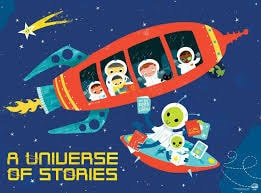
SPACE STORIES!
Look at the following titles which you could use to write a space story.
1. Lost in Space!
2. Mission to Mars!
3. My Friend from Pluto.
4. Alien Attack!
5. Race to the Stars!
Look at the following titles which you could use to write a space story.
1. Lost in Space!
2. Mission to Mars!
3. My Friend from Pluto.
4. Alien Attack!
5. Race to the Stars!
CREATIVE SPACE!
Look at the photographs above. Aren't they beautiful? Choose one of them and think about words that describe that image. Write your ideas down and create a poem.
Here is an example of some of the words that I thought of when I looked at photograph 6.
Swirling, spiraling, rainbow, kaleidoscope, colours, tilt, cascade, vast, black, curling,
wisps, misty, vibrant
Now that I have some words, I can start to build my poem.
Spiraling rainbow, lights up the vast blackness.
A tilting cascade of kaleidoscopic colours
Curl round and round, endlessly spinning.
Wisps of vibrant amethyst, create a translucent mist.
Choose one photograph or if you are feelin inspired choose them all and write your own poem.
Over to you!
Look at the photographs above. Aren't they beautiful? Choose one of them and think about words that describe that image. Write your ideas down and create a poem.
Here is an example of some of the words that I thought of when I looked at photograph 6.
Swirling, spiraling, rainbow, kaleidoscope, colours, tilt, cascade, vast, black, curling,
wisps, misty, vibrant
Now that I have some words, I can start to build my poem.
Spiraling rainbow, lights up the vast blackness.
A tilting cascade of kaleidoscopic colours
Curl round and round, endlessly spinning.
Wisps of vibrant amethyst, create a translucent mist.
Choose one photograph or if you are feelin inspired choose them all and write your own poem.
Over to you!

SPACE FACTS.
Not everyone likes to write stories all the time so why not write a piece of factual writing instead.
Here are a few ideas about some activities you could do.
1. Draw the solar system, label the planets. and write two facts about each of them.
2. Describe the Milky Way.
3. Find out and explain what a black hole is.
4. What is a satellite?
5.. Explain the difference is between a moon and a star.
6. Who was the first man on the Moon? Write a short 500word biography about him.
7. Choose one planet and research at least 10 facts about it and write a report about it.
8. What was known as the 'space race'?
9. Explain how the space shuttle made a big difference to space flight.
10. How would you become an astronaut?
Not everyone likes to write stories all the time so why not write a piece of factual writing instead.
Here are a few ideas about some activities you could do.
1. Draw the solar system, label the planets. and write two facts about each of them.
2. Describe the Milky Way.
3. Find out and explain what a black hole is.
4. What is a satellite?
5.. Explain the difference is between a moon and a star.
6. Who was the first man on the Moon? Write a short 500word biography about him.
7. Choose one planet and research at least 10 facts about it and write a report about it.
8. What was known as the 'space race'?
9. Explain how the space shuttle made a big difference to space flight.
10. How would you become an astronaut?
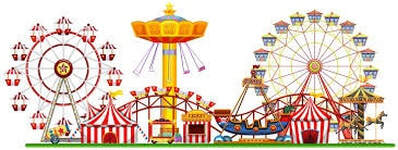
DESIGN A FUN FAIR!
Why not create your own fantastic new
fun fair or fun fair world?
First think of all the different types of attractions and rides that you could have, such as, rollercoasters, a ferris wheel, log flume etc.
You could create a themed fun park.
Some ideas could be:
1. Fairytales
2. Superheroes.
3. Pirates.
4. Space.
5. Halloween.
Then think about how you could improve them; make them even more special.
Draw your ideas and label their features.
Once you have enough attractions for your fun world then draw a plan of how they would be arranged. Remember in you plan to add in walkways, entrances and exits.
You should also include a list of amenities such as, car parks, cafes, toilets, first aid ticket booths and so on. Then place them on your plan..
Be wild and let you imagination soar!
Why not create your own fantastic new
fun fair or fun fair world?
First think of all the different types of attractions and rides that you could have, such as, rollercoasters, a ferris wheel, log flume etc.
You could create a themed fun park.
Some ideas could be:
1. Fairytales
2. Superheroes.
3. Pirates.
4. Space.
5. Halloween.
Then think about how you could improve them; make them even more special.
Draw your ideas and label their features.
Once you have enough attractions for your fun world then draw a plan of how they would be arranged. Remember in you plan to add in walkways, entrances and exits.
You should also include a list of amenities such as, car parks, cafes, toilets, first aid ticket booths and so on. Then place them on your plan..
Be wild and let you imagination soar!

WORD PUZZLES
Unscramble the word in italics to complete the sentence correctly.
1. The bleat was made of solid oak.
2. Whilst picking berries, Sam got a north in his finger.
3. A huge could darkened the sky.
4. The plates of the buttercup are yellow.
5. Mr. Jones, the headteacher has a grey, bread.
Why don't you think of some?
Unscramble the word in italics to complete the sentence correctly.
1. The bleat was made of solid oak.
2. Whilst picking berries, Sam got a north in his finger.
3. A huge could darkened the sky.
4. The plates of the buttercup are yellow.
5. Mr. Jones, the headteacher has a grey, bread.
Why don't you think of some?

WORD PUZZLES
Can you break the codes?
1. IJOU = HINT then UIJO = ----?
2. UJEF = TIDE then EJFU = ----?
3. DBSF = CARE then SBDF = ----?
4. BDUT =ACTS then DBTU = ----?
5. IVCT = HUBS then CVTI = ----?
Can you break the codes?
1. IJOU = HINT then UIJO = ----?
2. UJEF = TIDE then EJFU = ----?
3. DBSF = CARE then SBDF = ----?
4. BDUT =ACTS then DBTU = ----?
5. IVCT = HUBS then CVTI = ----?

WORD PUZZLES
If bar is to bare and hop is to hope, what are the following?
1. tea is to team so war is to _________.
2. pin is to pink so for is to __________.
3. bat is to bath so was is to _________.
4. bee is to beer so pea is to__________
5. rip is to ripe so wag is to___________.
Why not try to make up some of your own?
If bar is to bare and hop is to hope, what are the following?
1. tea is to team so war is to _________.
2. pin is to pink so for is to __________.
3. bat is to bath so was is to _________.
4. bee is to beer so pea is to__________
5. rip is to ripe so wag is to___________.
Why not try to make up some of your own?
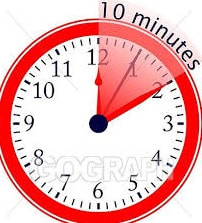
A 10 MINUTE TASK EACH DAY IS A GOOD WAY TO GET THOSE LITLE GREY CELLS WORKING. LOOK BELOW FOR A FEW IDEAS.
10 MINUTE TASKS!
How good are you at writing contractions such as:
he is = he's I will = I'll I have = I've.
Lets see how many you can write down in 10 minutes.
you will = ? is not = ? we will = ? does not = ? where is = ? can not = ?
did not = ? she is = ? you are = ? they will = ? do not = ? she will = ?
that is = ? was not = ? it is = ? is not = ? where is = ? have not =?
How good are you at writing contractions such as:
he is = he's I will = I'll I have = I've.
Lets see how many you can write down in 10 minutes.
you will = ? is not = ? we will = ? does not = ? where is = ? can not = ?
did not = ? she is = ? you are = ? they will = ? do not = ? she will = ?
that is = ? was not = ? it is = ? is not = ? where is = ? have not =?
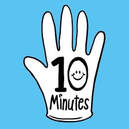
10 MINUTE TASKS!
Copy these sentences and then choose the correct verb to fill in the space. Is it took or taken?
1. The man was ________ill at the football match.
2. The two men were _______to prison.
3. They _______the boy to hospital.
4. After Alan had __________ his shoes to the shoe repairer he went fishing.
5. Susan ______her puppy to the vet for its vaccination.
If you look carefully you will notice that the verb took needs no help but the verb taken needs some help. These help words are known as auxiliary verbs.
is taken are taken has taken had taken was taken were taken
have taken will be taken.
Write 5 sentences of your own using an auxiliary verb and taken.
Copy these sentences and then choose the correct verb to fill in the space. Is it took or taken?
1. The man was ________ill at the football match.
2. The two men were _______to prison.
3. They _______the boy to hospital.
4. After Alan had __________ his shoes to the shoe repairer he went fishing.
5. Susan ______her puppy to the vet for its vaccination.
If you look carefully you will notice that the verb took needs no help but the verb taken needs some help. These help words are known as auxiliary verbs.
is taken are taken has taken had taken was taken were taken
have taken will be taken.
Write 5 sentences of your own using an auxiliary verb and taken.
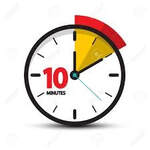
10 MINUTE TASKS!
Here are the beginning of 5 sentences. Copy them down and then think of an interesting way to finish them. You can be as creative as you want!
1. The greedy boy was ill...
2. After mowing the lawns...
3. The weather was so cold...
4. The camel is often called...
5. Every Christmas Eve...
Remember to write in your neatest handwriting.
Here are the beginning of 5 sentences. Copy them down and then think of an interesting way to finish them. You can be as creative as you want!
1. The greedy boy was ill...
2. After mowing the lawns...
3. The weather was so cold...
4. The camel is often called...
5. Every Christmas Eve...
Remember to write in your neatest handwriting.
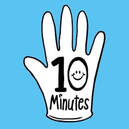
10 MINUTE TASKS!
Things which are alike are called similes. It is always a good idea to include some similes in your writing.
Here are a few examples:
as black as pitch as weak as a kitten as hard as nails.
as soft as cotton wool as hot as fire as green as grass
These examples are rather ordinary. Can you think of some WOW examples?
Copy out the ordinary ones and underneath write your new ideas.
As fast as a cheetah = As fast as a cheetah with its tail on fire.
You could use this activity to practice your neatest handwriting.
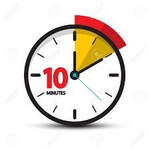
10 MINUTE TASKS!
Ask your children to copy out the following sentences adding interesting adjectives in the spaces. Remember an adjective is a word that describes a noun e.g. the angry man or the dusty road.
1. The _________huntsman enjoyed the ________ dinner.
2. A __________dog was snarling at the _________boy.
3. It was a ________, _________ night.
4. There was a _________fire in the kitchen.
5. The _______sailor dived into the _______sea to save his friend.
Remember to write in your neatest handwriting.
Ask your children to copy out the following sentences adding interesting adjectives in the spaces. Remember an adjective is a word that describes a noun e.g. the angry man or the dusty road.
1. The _________huntsman enjoyed the ________ dinner.
2. A __________dog was snarling at the _________boy.
3. It was a ________, _________ night.
4. There was a _________fire in the kitchen.
5. The _______sailor dived into the _______sea to save his friend.
Remember to write in your neatest handwriting.
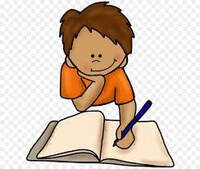
WRITE A LETTER! INFORMAL
Do you remember those lockdown days when you weren't allowed to see family or friends? You most probably spent some time emailing them, texting them or phoning them. You might have used Zoom to contact them. All good ways of keeping in touch.
So the challenge today is, why not be a little old fashioned and write a letter rather than texting or using social media to keep in touch.
You will find examples of different types of letters on the internet.
An informal letter could be written to family members, friends, and people that you know well. You could tell them about your day, or some of the things that you have been doing over the past few weeks. You could ask questions about the things that they have been doing?
Simple and easy.
Once you have written it, why not post it? And see if you receive a letter back. That would be great wouldn't it!
Do you remember those lockdown days when you weren't allowed to see family or friends? You most probably spent some time emailing them, texting them or phoning them. You might have used Zoom to contact them. All good ways of keeping in touch.
So the challenge today is, why not be a little old fashioned and write a letter rather than texting or using social media to keep in touch.
You will find examples of different types of letters on the internet.
An informal letter could be written to family members, friends, and people that you know well. You could tell them about your day, or some of the things that you have been doing over the past few weeks. You could ask questions about the things that they have been doing?
Simple and easy.
Once you have written it, why not post it? And see if you receive a letter back. That would be great wouldn't it!
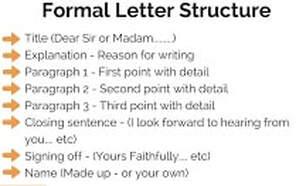
WRITE A LETTER! FORMAL.
Ask for a letter that your parents may have received from the bank or from an insurance company and look at how the letter has been set out. These types of letters would be called formal letters.
Formal letter- Prime Minister, Owner of a company, shop manager, Mayor
This has more serious vocabulary and a more structured approach to writing it. Look at the example.
Once you have decided who you want to write a letter to then off you go.
Ask for a letter that your parents may have received from the bank or from an insurance company and look at how the letter has been set out. These types of letters would be called formal letters.
Formal letter- Prime Minister, Owner of a company, shop manager, Mayor
This has more serious vocabulary and a more structured approach to writing it. Look at the example.
Once you have decided who you want to write a letter to then off you go.
DESIGN A HOUSE
Below are some fantasy houses. Their architects looked 'outside of the box ' and let their imaginations free. Why don't you create and design your own house.
Think about the following:
1. Would you live in it or is it for someone else?
2. Where would you build it?
3. What materials would you use?
4. What would the inside look like?
Who would live in a house like these? Write about them.
Below are some fantasy houses. Their architects looked 'outside of the box ' and let their imaginations free. Why don't you create and design your own house.
Think about the following:
1. Would you live in it or is it for someone else?
2. Where would you build it?
3. What materials would you use?
4. What would the inside look like?
Who would live in a house like these? Write about them.
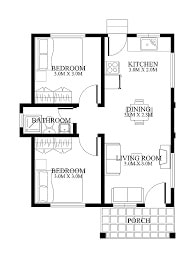
HOUSE PLANS.
This picture shows a plan of a house. Why don't you make a plan of your house in the same way. You might need to create one for the bottom floor and one for the top floor.
(This example is for a bungalow, which is easier to do!)
If you have a garden why not make a plan of that as well?
This picture shows a plan of a house. Why don't you make a plan of your house in the same way. You might need to create one for the bottom floor and one for the top floor.
(This example is for a bungalow, which is easier to do!)
If you have a garden why not make a plan of that as well?
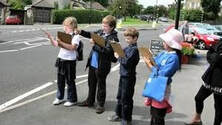
STREET SURVEY.
In good weather, it might be an idea to do a writing activity outside. Creating a street survey can be fun and keep your child not only active but interested. It is also another way to record our social history.
You will need pencils, A4 paper and a board or A4 size book to lean the paper on.
You could draw a plan of the street or shopping area/mall.
You could write down the names of the different shops and what each one sells.
If there are any streets that branch off from the street you are walking down, then you could write down their names and add them to your plan.
When you get back home you could write an account of your walk.
In good weather, it might be an idea to do a writing activity outside. Creating a street survey can be fun and keep your child not only active but interested. It is also another way to record our social history.
You will need pencils, A4 paper and a board or A4 size book to lean the paper on.
You could draw a plan of the street or shopping area/mall.
You could write down the names of the different shops and what each one sells.
If there are any streets that branch off from the street you are walking down, then you could write down their names and add them to your plan.
When you get back home you could write an account of your walk.
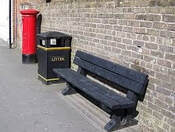
STREET FURNITURE SURVEY
When making a map or plan of a street, it is a good idea to build up a picture of not
just the shops but also what else can be found in the street such as the following:
tele-communication poles, fixed information boards,
free standing advertising boards., post boxes,
telephone boxes, sign posts
garden flower pots
benches, litter bins,
street lights, bike racks
ornamental features such as a stone cross or statue.
Why not take a photograph of the different types of street furniture you found on your walk.
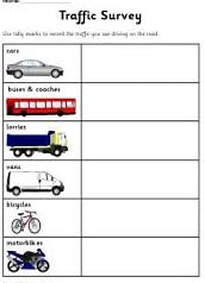
TRAFFIC PEOPLE TALLY CHARTS.
When completing a street survey, it is a good idea to add a traffic and people survey chart as well. This could be recorded as a tally chart.
First, the children make a note of the time that they are starting the tally.
Children could stand at the start of the street and count the number of vehicles that pass in a 3 or 5 minute time frame. They record the numbers on the tally chart.
They then repeat this at the end of the street or shopping area, again making a note of the time to see if they can make a comparison. Discuss with them any differences that they may find.
A people study can be done in a similar way.
This time the chart should have categories like:
babies, children, teenagers, young woman, young man, old woman, old man.
These types of activities are rewarding, fun and can make the children think about their area in a more geographic and scientific way. Discussion at the end of these activities is important, so that children can practice their interpreting data skills.
Before leaving the house it is a good idea to have both of these charts already prepared. (see picture above)
When completing a street survey, it is a good idea to add a traffic and people survey chart as well. This could be recorded as a tally chart.
First, the children make a note of the time that they are starting the tally.
Children could stand at the start of the street and count the number of vehicles that pass in a 3 or 5 minute time frame. They record the numbers on the tally chart.
They then repeat this at the end of the street or shopping area, again making a note of the time to see if they can make a comparison. Discuss with them any differences that they may find.
A people study can be done in a similar way.
This time the chart should have categories like:
babies, children, teenagers, young woman, young man, old woman, old man.
These types of activities are rewarding, fun and can make the children think about their area in a more geographic and scientific way. Discussion at the end of these activities is important, so that children can practice their interpreting data skills.
Before leaving the house it is a good idea to have both of these charts already prepared. (see picture above)
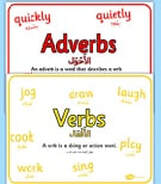
VERBS AND ADVERBS
This activity does not need children to write!
All you need to do is make two sets of cards / pieces of paper, nothing fancy.
On one set write down a different verb or for some children, 'a doing word.'
For example:
walking, talking, skating, skiing, jumping, eating, snoring, smiling, rolling,
Then on the other set of cards write down a different adverb. A word which describes the action of the verb.
For example:
loudly, slowly, quickly, suddenly, quietly, stupidly, carefully
Have the cards face down and then ask the children to choose one card from each set and then act out the action. This could be done as a game with the family or simply just to help children reinforce the concept of what a verb is and what an adverb is and the jobs they do in a sentence.
Simple and quick!
VERBS AND ADVERBS.
This is where the children could do some writing.
They could write out the verb in red and the adverb in green for each pair that they act out.
They could write them down in a sentence and underline the verb in red and the adverb in green.
This activity does not need children to write!
All you need to do is make two sets of cards / pieces of paper, nothing fancy.
On one set write down a different verb or for some children, 'a doing word.'
For example:
walking, talking, skating, skiing, jumping, eating, snoring, smiling, rolling,
Then on the other set of cards write down a different adverb. A word which describes the action of the verb.
For example:
loudly, slowly, quickly, suddenly, quietly, stupidly, carefully
Have the cards face down and then ask the children to choose one card from each set and then act out the action. This could be done as a game with the family or simply just to help children reinforce the concept of what a verb is and what an adverb is and the jobs they do in a sentence.
Simple and quick!
VERBS AND ADVERBS.
This is where the children could do some writing.
They could write out the verb in red and the adverb in green for each pair that they act out.
They could write them down in a sentence and underline the verb in red and the adverb in green.
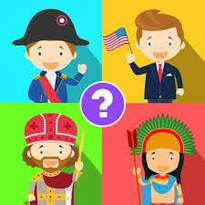
HISTORICAL FIGURES.
I know that lots of children. like to find out about the past. Researching a different time period can be interesting. However, I'm going to suggest something a little bit different.
Below are the names of famous people from history. Why not try to find out about their lives and write a short biography of one or all of them!
Alfred the Great Florence Nightingale Marco Polo
Winston Churchill Joan of Arc Martin Luther King
If you check out my Children's Poetry and Prose page, I have written a biography of Boudicca, which might help to get you started.
A simple biography needs:
1. An introduction
2. Answers to the 5 major questions of, Who? What? When? Where? and Why?
3. Plus extra interesting details of events or activities that the person you are writing about was involved with.
I know that lots of children. like to find out about the past. Researching a different time period can be interesting. However, I'm going to suggest something a little bit different.
Below are the names of famous people from history. Why not try to find out about their lives and write a short biography of one or all of them!
Alfred the Great Florence Nightingale Marco Polo
Winston Churchill Joan of Arc Martin Luther King
If you check out my Children's Poetry and Prose page, I have written a biography of Boudicca, which might help to get you started.
A simple biography needs:
1. An introduction
2. Answers to the 5 major questions of, Who? What? When? Where? and Why?
3. Plus extra interesting details of events or activities that the person you are writing about was involved with.
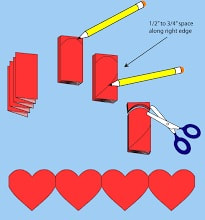
PAPER CHAIN CUTOUTS UPDATE!
If you have already tried the paper people cutouts then a great way to update this is to cut out a different shaped chain.
For example:
If you were doing some science research on the heart, then you could create a chain of hearts and write your facts down on each heart!
Why not make a football shape and write down facts about your favourite team or the history of how football started.
A circle shape could also be used if you were writing about the planets.
A star shape could be used if you are writing about your favourite performer, actor, singer or group.
I'm sure that if you use your imagination you could come up with other ideas.
If you have already tried the paper people cutouts then a great way to update this is to cut out a different shaped chain.
For example:
If you were doing some science research on the heart, then you could create a chain of hearts and write your facts down on each heart!
Why not make a football shape and write down facts about your favourite team or the history of how football started.
A circle shape could also be used if you were writing about the planets.
A star shape could be used if you are writing about your favourite performer, actor, singer or group.
I'm sure that if you use your imagination you could come up with other ideas.
QUESTION QUIZ TIME!
Find the answers for these pictures below.
Find the answers for these pictures below.
- What is it?
- Where would you find it?
- When was it built?
- Who built it?
- Why was it built?
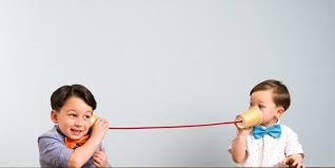
LISTEN AND RECALL!
This activity is done with a partner. It can be anyone in your household or if you Skype or Zoom or use any of these type of video links then that will work as well.
Partner A is given a passage or mini story to read out to partner B.
Partner B listens to the story and draws pictures to help him or her to remember the story.
When Partner B has finished his or her drawings then he or she retells Partner A the story as accurately as they can. ( You could give points for parts of the story that match up exactly if you wanted to)
Then it is Partner B's turn. ( if you are online then Partner B must have a similar mini story to read out)
As a great deal of education requires children to listen whilst someone is talking, then to build up these skills is essential and if you start with little exercises like this regularly, children's listening skills will improve!
Here are two examples to get you started:
Partner A's story.
Joe and his two friends walk to the park to play football. Joe scores the first goal and he celebrates by running around in a circle with his arms held out wide. The goalkeeper is annoyed so he kicks the ball away in anger. The ball soars in the sky and drops into the back of an open van, which is parked outside the park's gate. The boys run to the gate to get the ball, but the van drives off with the ball still in the back!
Partner B's story.
Jo and her three friends are in the back garden playing hide and seek. Jo climbs up a tree to hide and the others can't find her. They look in the bushes and behind the benches. Jo calls out to them. They look up and see her in the tree and they all laugh. But Jo has a problem she can't get down. One of Jo's friends runs into the house. Jo's Dad gets a ladder and climbs up to rescue her.
This is a simple way of introducing note taking, which children will need in later schooling. It will eventually, lead on to word note taking rather than pictures as children grow older. Hopefully, by practicing this, children will be able to retell the story or information given without visual or written help.
P.S. If you look at the photograph that I have used at the start of the idea, you may want to make one of these listening devices yourself. They are great fun!
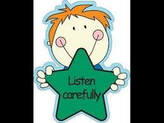
LISTEN CAREFULLY!
Ask the children to sit down and give them a piece of paper, a pencil. and some crayons or felt tips. Read out the following paragraph and ask them to listen carefully and draw what they hear.
Inside a large square sits a house with a red slanting roof. It has one large window on the right and two smaller ones on the left. In the middle there is a black front door, with a gold door knocker. Around the house is a brown, wooden garden fence with a curving pathway leading to a fancy gate.
There are two large trees, full of bright green leaves on either side of the gate and the garden is full of colourful flowers. The sun is shining and there is a rainbow in the sky.
This type of exercise helps children, especially younger ones to focus and practice using their listening and understanding skills. You could do this again and again writing your own paragraphs. It also makes a change from the frenzy and chaos that can ensue during wet, rainy days inside!
Ask the children to sit down and give them a piece of paper, a pencil. and some crayons or felt tips. Read out the following paragraph and ask them to listen carefully and draw what they hear.
Inside a large square sits a house with a red slanting roof. It has one large window on the right and two smaller ones on the left. In the middle there is a black front door, with a gold door knocker. Around the house is a brown, wooden garden fence with a curving pathway leading to a fancy gate.
There are two large trees, full of bright green leaves on either side of the gate and the garden is full of colourful flowers. The sun is shining and there is a rainbow in the sky.
This type of exercise helps children, especially younger ones to focus and practice using their listening and understanding skills. You could do this again and again writing your own paragraphs. It also makes a change from the frenzy and chaos that can ensue during wet, rainy days inside!
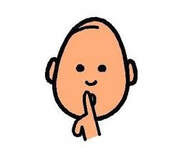
LISTEN!
This activity requires children to sit and be quiet!
Ask children to listen carefully, without talking or moving for one minute. After the minute is up, ask them to write down all the different sounds that they heard.
When they have a list ask them to add an adjective or an adverb to all the sounds.
Here are a couple of examples
I heard a clocking ticking - becomes I heard a clock ticking quietly.
I heard a dog barking - becomes I heard a ferocious dog barking.
I heard Dad whistling - becomes I heard Dad whistling happily.
And if they want to extend their sentences how about something like this:
I heard a car - becomes I heard a noisy car roaring down the road!
This can become a list poem. Easy isn't it!
This activity requires children to sit and be quiet!
Ask children to listen carefully, without talking or moving for one minute. After the minute is up, ask them to write down all the different sounds that they heard.
When they have a list ask them to add an adjective or an adverb to all the sounds.
Here are a couple of examples
I heard a clocking ticking - becomes I heard a clock ticking quietly.
I heard a dog barking - becomes I heard a ferocious dog barking.
I heard Dad whistling - becomes I heard Dad whistling happily.
And if they want to extend their sentences how about something like this:
I heard a car - becomes I heard a noisy car roaring down the road!
This can become a list poem. Easy isn't it!
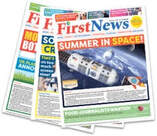
NEWSPAPERS !
DO YOU KNOW WHAT THESE WORDS HAVE TO DO WITH A NEWSPAPER?
YOU MAY NEED A DICTIONARY OR A SEARCH ENGINE TO HELP YOU FIND OUT.
Editor journalist publisher eye witness interview copy newsroom deadline
Write down the names of as many newspapers as you can.
What is the difference between a tabloid newspaper and a broadsheet?
Which newspaper does your family read?
Interview members of your family and find out why they read that newspaper?
DO YOU KNOW WHAT THESE WORDS HAVE TO DO WITH A NEWSPAPER?
YOU MAY NEED A DICTIONARY OR A SEARCH ENGINE TO HELP YOU FIND OUT.
Editor journalist publisher eye witness interview copy newsroom deadline
Write down the names of as many newspapers as you can.
What is the difference between a tabloid newspaper and a broadsheet?
Which newspaper does your family read?
Interview members of your family and find out why they read that newspaper?
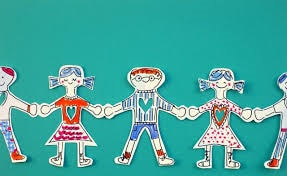
PAPER PEOPLE CHAIN
This is a fun activity for you to try. If you are working with younger children, you might want to make these people paper chains beforehand. If your children are older then let them follow the instructions below.
What you need
- pencil
- paper
- scissors
- crayons
Fold paper, accordion-fashion.
The number of folds in the paper determines the number of people in the chain.
On the top piece of the folded paper, draw a person whose hands extend to touch the folds of the paper on each side.
Carefully cut around the person, making sure not to cut where the hands meet the folds.
Open up the paper and your child will have a chain of several people holding hands.
Colour them in with crayons, make different expressions on each face, or create a themed group.
Some suggestions for decoration:
1. Create a football crowd of supporters for your favourite team.
2. A team of your favourite football team players.
3. Superheroes.
4. Female pop stars.
5. Your family.
With thanks to www.kidspot for instructions help.
QUESTION QUIZ!
There are 5 major questions that we should all know about. They begin with the letter W.
What? Where? When? Who? Why?
Look at the pictures below. For each one answer the following questions:
There are 5 major questions that we should all know about. They begin with the letter W.
What? Where? When? Who? Why?
Look at the pictures below. For each one answer the following questions:
- What is it?
- Where would you find it?
- When was it built?
- Who built it?
- Why was it built?

CATCH THEM OUT!
This is a fun game for you to try. You say to someone, a brother a sister, Mum or Dad the following: Constantinople is a very long word. Can you spell it?
Now hopefully whoever you asked will spell or try to spell the word Constantinople and every time they do, you say, "Sorry but that is incorrect."
Some will want to try over and over again. Some will want to write it down but every time they give a spelling for the word Constantinople it will always be wrong.
Why?
Well, if you look back at what you asked, the sentence Constantinople is a very long word. is in fact a statement not a question.
Your questions was, Can you spell it? So, the correct spelling was the letter I and the letter t! LOL
(Be wary as some clever person might just answer Yes or No!)
Now for the real challenge. using the letters in the word Constantinople, how many different words can you make.
Here are a few to help you get started - police, polite, stain, stone, line, open, station contain.
Research- Where is Constantinople? Is it still called that today? Write down 5 facts that you found interesting about it.
This is a fun game for you to try. You say to someone, a brother a sister, Mum or Dad the following: Constantinople is a very long word. Can you spell it?
Now hopefully whoever you asked will spell or try to spell the word Constantinople and every time they do, you say, "Sorry but that is incorrect."
Some will want to try over and over again. Some will want to write it down but every time they give a spelling for the word Constantinople it will always be wrong.
Why?
Well, if you look back at what you asked, the sentence Constantinople is a very long word. is in fact a statement not a question.
Your questions was, Can you spell it? So, the correct spelling was the letter I and the letter t! LOL
(Be wary as some clever person might just answer Yes or No!)
Now for the real challenge. using the letters in the word Constantinople, how many different words can you make.
Here are a few to help you get started - police, polite, stain, stone, line, open, station contain.
Research- Where is Constantinople? Is it still called that today? Write down 5 facts that you found interesting about it.
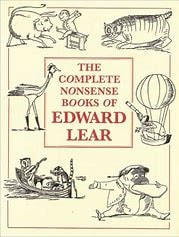
LIMERICKS!
There are many different types of poems. A very popular one especially for children is a limerick.
There was an old man from Peru
Who dreamed he was eating his shoe.
He woke in the night
With a terrible fright
To discover it was totally true!
A limerick is a short poem of 5 lines. It has a strict format as each line has to have a certain number of beats or syllables. A syllable is the number of sounds that a word can be cut up into.
Here are some examples:
shoe has 1 syllable,
hap/py has 2 syllables,
won/der/ful has 3 syllables,
in/ter/rest/ing has 4 syllables,
un/fort/u/nate/ly had 5 syllables.
A limerick is set out like this. This pattern gives the poem is special rhythm.
Line 1 has 7 syllables.
Line 2 has 7
Line 3 has 5
Line 4 has 5
Line 5 has 7.
It is usually silly and funny. A writer called Edward Lear wrote a book called, 'The Book of Nonsense' which has a lot of nonsense verses in it. Why not check him out?
A limerick usually rhymes.
Lines 1 and 2 have the same rhyme.
Lines 3 and 4 have a different rhyme
And line 5 rhymes with line 1 and 2.
Here is another example to help you understand.
There was an old man with a beard
Who said, " It is just as I feared.
Two owls and a hen
Four larks and a wren
Have all built their nests in my beard!"
You will notice that this limerick is slightly different. Why not count the syllables! Yet it still works.
I tried to write two myself, which I have added to my children's poetry and prose page. Look at them and see if I have followed the rules correctly.
Limericks can be fun and you can be silly so off you go! Good Luck!
There are many different types of poems. A very popular one especially for children is a limerick.
There was an old man from Peru
Who dreamed he was eating his shoe.
He woke in the night
With a terrible fright
To discover it was totally true!
A limerick is a short poem of 5 lines. It has a strict format as each line has to have a certain number of beats or syllables. A syllable is the number of sounds that a word can be cut up into.
Here are some examples:
shoe has 1 syllable,
hap/py has 2 syllables,
won/der/ful has 3 syllables,
in/ter/rest/ing has 4 syllables,
un/fort/u/nate/ly had 5 syllables.
A limerick is set out like this. This pattern gives the poem is special rhythm.
Line 1 has 7 syllables.
Line 2 has 7
Line 3 has 5
Line 4 has 5
Line 5 has 7.
It is usually silly and funny. A writer called Edward Lear wrote a book called, 'The Book of Nonsense' which has a lot of nonsense verses in it. Why not check him out?
A limerick usually rhymes.
Lines 1 and 2 have the same rhyme.
Lines 3 and 4 have a different rhyme
And line 5 rhymes with line 1 and 2.
Here is another example to help you understand.
There was an old man with a beard
Who said, " It is just as I feared.
Two owls and a hen
Four larks and a wren
Have all built their nests in my beard!"
You will notice that this limerick is slightly different. Why not count the syllables! Yet it still works.
I tried to write two myself, which I have added to my children's poetry and prose page. Look at them and see if I have followed the rules correctly.
Limericks can be fun and you can be silly so off you go! Good Luck!
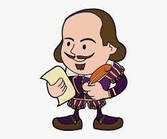
APRIL 23rd is a special birthday for a famous playwright.
Do you know who he is?
When did he live?
How many plays do you know the names of?
Here are a few to start you off.
Oops! I seem to have put the letters in the wrong order. Why not try and rearrange them?
1. fhlwett tinhg
2. nikg rela
3. mooer nda tlujie
4. netrisw ealt a
5. uusilj resaca
Do you know who he is?
When did he live?
How many plays do you know the names of?
Here are a few to start you off.
Oops! I seem to have put the letters in the wrong order. Why not try and rearrange them?
1. fhlwett tinhg
2. nikg rela
3. mooer nda tlujie
4. netrisw ealt a
5. uusilj resaca
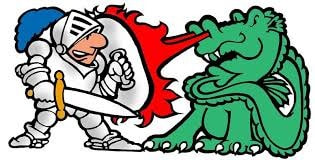
ST. GEORGE AND THE DRAGON.
This story is a called a legend.
1. Find out what kind of story a legend is.
2. Find out the story of St George and the Dragon.
3. Re- write your own version of the story.
4. Draw a dragon. Give him/her a name.
5. Write down five facts about your dragon.
This story is a called a legend.
1. Find out what kind of story a legend is.
2. Find out the story of St George and the Dragon.
3. Re- write your own version of the story.
4. Draw a dragon. Give him/her a name.
5. Write down five facts about your dragon.
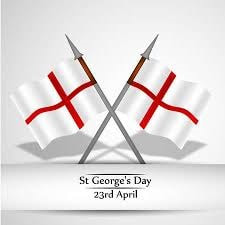
APRIL 23rd
April 23rd is St. George’s day in England. St George is our country’s patron saint.
Here are two things for you to do:
What is a saint?
What is a patron saint?
Who was St. George?
How and why did he become England’s patron saint?
April 23rd is St. George’s day in England. St George is our country’s patron saint.
Here are two things for you to do:
What is a saint?
What is a patron saint?
Who was St. George?
How and why did he become England’s patron saint?
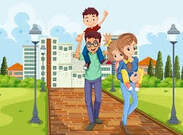
A WALK IN THE PARK.
Next time you go for a walk in the park or in the countryside, take a treasure bag (a simple supermarket bag will be fine) and collect as many items as you can from your walk.
Please remember health and safety for this activity. Children should really wear gloves when handling items taken from the ground. Supervision is needed to make sure that children don't pick up anything dangerous. Only take things that are not part of a formal display.
These could be a variety of different leaves, a dandelion or daisy. An acorn, a chestnut conker or an interesting stick.
You might find a feather or a tuft of fur. Anything from nature would be fantastic.
Then take these home and the fun can start.
1. Draw a picture of each item and colour them accurately.
2. Make a collage of your collection.
3. Label each item in your collage.
4. Do some research and find out a few facts about them.
5. You could also take with you some thick wax crayons, or simply a pencil and a piece of paper demonstrate how to do a bark rubbing. Ask the children to touch the tree bark. What does it feel like? What does it look like?
6. If there is a building along your walk, you could make a rubbing of the brick work. Look at the patterns made by the bricks. Ask them why do they think the brick have been laid out that way? Do some research on brick patterns when you get back home.
7. If you have taken paper and pencils with you, then take a short break whilst your children draw a scene from their walk.
Next time you go for a walk in the park or in the countryside, take a treasure bag (a simple supermarket bag will be fine) and collect as many items as you can from your walk.
Please remember health and safety for this activity. Children should really wear gloves when handling items taken from the ground. Supervision is needed to make sure that children don't pick up anything dangerous. Only take things that are not part of a formal display.
These could be a variety of different leaves, a dandelion or daisy. An acorn, a chestnut conker or an interesting stick.
You might find a feather or a tuft of fur. Anything from nature would be fantastic.
Then take these home and the fun can start.
1. Draw a picture of each item and colour them accurately.
2. Make a collage of your collection.
3. Label each item in your collage.
4. Do some research and find out a few facts about them.
5. You could also take with you some thick wax crayons, or simply a pencil and a piece of paper demonstrate how to do a bark rubbing. Ask the children to touch the tree bark. What does it feel like? What does it look like?
6. If there is a building along your walk, you could make a rubbing of the brick work. Look at the patterns made by the bricks. Ask them why do they think the brick have been laid out that way? Do some research on brick patterns when you get back home.
7. If you have taken paper and pencils with you, then take a short break whilst your children draw a scene from their walk.
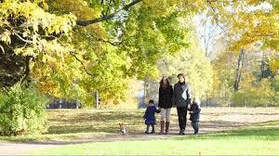
A WALK IN THE PARK.
I walked around my local park I thought of some more ideas that you and your children might like to try.
1. If you child is old enough to have their own mobile phone then ask them to take some photographs of their walk. These could be photos of trees, flowers, playgrounds, duckponds or simple some of the people that are walking there.
2. Talk to them about framing a photograph or show them how to zoom in for more detail.
3. When back at home, ask the children to download the photographs onto their computers or print them and then they can use these to stimulate some form of writing.
These could include;
a) A diary of events in chronological order of their walk.
b) A simple description of the photograph.
c) A poem ( look below for exercises on how to collect vocabulary and how to write a poem)
d) Research on a tree or flower or a building found in the park.
e) Research the park itself, for example; find the answers to the 5 main questions - 'What? Where? When?
Who? and Why?
I walked around my local park I thought of some more ideas that you and your children might like to try.
1. If you child is old enough to have their own mobile phone then ask them to take some photographs of their walk. These could be photos of trees, flowers, playgrounds, duckponds or simple some of the people that are walking there.
2. Talk to them about framing a photograph or show them how to zoom in for more detail.
3. When back at home, ask the children to download the photographs onto their computers or print them and then they can use these to stimulate some form of writing.
These could include;
a) A diary of events in chronological order of their walk.
b) A simple description of the photograph.
c) A poem ( look below for exercises on how to collect vocabulary and how to write a poem)
d) Research on a tree or flower or a building found in the park.
e) Research the park itself, for example; find the answers to the 5 main questions - 'What? Where? When?
Who? and Why?
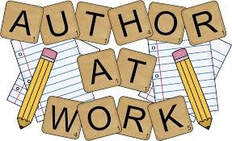
RECYCLING STORIES.
This is a great way to get children to start writing. Simply ask them to write a story that they already know!
It could be as easy as retelling a favourite fairy tale or even a Disney film!
This activity is not cheating!
Children will use their own words and often interpret a well known story in their own way. It helps to build up knowledge of a story plot, story time line e.g. chronological order. It helps them to practise writing in sentences, using the correct punctuation and also develops the use of paragraphs.
It reinforces what they have been taught about stories having a beginning, a middle and an end. That stories often have problems for the characters to solve and shows them how these problems can be resolved. It helps them to practice writing about characters and a setting. It can help them to develop speech and dialogue as well as boost their use of adjectives, verbs and adverbs.
And most of all it is FUN!
Here are some suggestions:
1. Robin Hood.
2. Frozen.
3. Cinderella./ Goldilocks and the 3 Bears./ Jack and the Beanstalk.
4. The Lion King.
5. Cars!
6. Finding Nemo
7.Transformers.
8. Superman
9.The 3 Musketeers.
10.King Arthur and the Knights of the Round Table.
This is a great way to get children to start writing. Simply ask them to write a story that they already know!
It could be as easy as retelling a favourite fairy tale or even a Disney film!
This activity is not cheating!
Children will use their own words and often interpret a well known story in their own way. It helps to build up knowledge of a story plot, story time line e.g. chronological order. It helps them to practise writing in sentences, using the correct punctuation and also develops the use of paragraphs.
It reinforces what they have been taught about stories having a beginning, a middle and an end. That stories often have problems for the characters to solve and shows them how these problems can be resolved. It helps them to practice writing about characters and a setting. It can help them to develop speech and dialogue as well as boost their use of adjectives, verbs and adverbs.
And most of all it is FUN!
Here are some suggestions:
1. Robin Hood.
2. Frozen.
3. Cinderella./ Goldilocks and the 3 Bears./ Jack and the Beanstalk.
4. The Lion King.
5. Cars!
6. Finding Nemo
7.Transformers.
8. Superman
9.The 3 Musketeers.
10.King Arthur and the Knights of the Round Table.
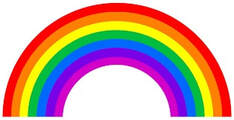
POSTERS
Posters are a quick way to inform people about events, warn them of dangers, advertise things of sale, and send a positive message.
Here are a few ideas ;
1.Design a poster about a special event e.g. your birthday, a party, a holiday destination, a plant sale, a bicycle race, a marathon run, a car boot sale.
Things to think about
a. the date
b., the day
c., the time
d. what will happen at the, event,
e. the cost,
f. the place
Some posters will require you to use persuasive vocabulary like, awesome, fantastic, enjoyable, free, value for money.
Do some research to find out other persuasive words. There are heaps of them out there!
Posters are a quick way to inform people about events, warn them of dangers, advertise things of sale, and send a positive message.
Here are a few ideas ;
1.Design a poster about a special event e.g. your birthday, a party, a holiday destination, a plant sale, a bicycle race, a marathon run, a car boot sale.
Things to think about
a. the date
b., the day
c., the time
d. what will happen at the, event,
e. the cost,
f. the place
Some posters will require you to use persuasive vocabulary like, awesome, fantastic, enjoyable, free, value for money.
Do some research to find out other persuasive words. There are heaps of them out there!
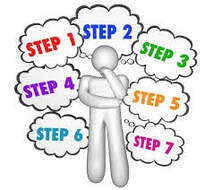
INSTRUCTIONS.
I am sure that you have at times had to follow a set of instructions like when baking a cake or planting seeds.
You might have helped to make a bed or water the plants or repot one. You might have designed and made a card or made a model using Lego.
If you like playing board games you will have had to follow a set of instructions explaining how to play the game.
How did you do these things? Could you help someone to do the same as you? Well, if you write a set of instructions for them to follow then they could.
Remember a set of instructions is a step by step guide of what you did.
You will need a list of the equipment that you used.
You should use .words like, first, then, next, now, after, and finally.
Using these words at the start of your sentences can help you to set out your steps in the correct order. These words are often called command verbs. I like to think of them of just being bossy!
First, start with the equipment..
Give a detailed list of the things that they will need.
Then think carefully about what the first step will be.
Make sure that you write a clear sentence.
Next, think about your second step and write that down.
Now read through what you have written.
Check that they makes sense and are exactly what you did.
After you have done that, write down the next set of instructions.
Finally, when you are satisfied that you have included everything, check each sentence to see that it makes sense.
Once you have done all of these things, you could try them out on a family member to see if they could follow your instructions.
I bet they can!
I am sure that you have at times had to follow a set of instructions like when baking a cake or planting seeds.
You might have helped to make a bed or water the plants or repot one. You might have designed and made a card or made a model using Lego.
If you like playing board games you will have had to follow a set of instructions explaining how to play the game.
How did you do these things? Could you help someone to do the same as you? Well, if you write a set of instructions for them to follow then they could.
Remember a set of instructions is a step by step guide of what you did.
You will need a list of the equipment that you used.
You should use .words like, first, then, next, now, after, and finally.
Using these words at the start of your sentences can help you to set out your steps in the correct order. These words are often called command verbs. I like to think of them of just being bossy!
First, start with the equipment..
Give a detailed list of the things that they will need.
Then think carefully about what the first step will be.
Make sure that you write a clear sentence.
Next, think about your second step and write that down.
Now read through what you have written.
Check that they makes sense and are exactly what you did.
After you have done that, write down the next set of instructions.
Finally, when you are satisfied that you have included everything, check each sentence to see that it makes sense.
Once you have done all of these things, you could try them out on a family member to see if they could follow your instructions.
I bet they can!
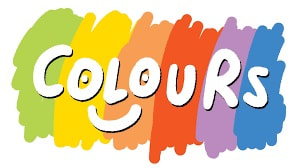
THINKING ABOUT COLOURS.
What is your favourite colour?
Write it down and then write a list of all the things that have this colour.
For example:
Blue = sky, sea, jumper, dress, hyacinths, my engagement ring, balloon, baby, bicycle, bluebells, husband’s eyes
Red= London double decker bus, post- box, fire-engine, ruby ring, Father Christmas’ suit, fire, flames, blood,
Once you have completed your list, add an adjective (describing word) or phrase to each word.
For example
BLUE.
An azure sky, filled with glory
Aqua sea, glistening in the sunlight
Soft blue jumper, cosy and warm
Sweet smelling hyacinths cheer me up
Shiny, sapphire engagement ring, surrounded by gold
RED
Full to bursting red double decker bus zooms around the busy city.
Sturdy post box, filled to the brim with lovely letters
Gleaming red fire engine, with loud siren blaring
Warm, cosy glow of the red flamed fire
Succulent tasting blood drips from the vampire's sharp teeth
As you can see, you have now started your own colour list poem!!
Easy isn’t it!
Now it’s your turn!
What is your favourite colour?
Write it down and then write a list of all the things that have this colour.
For example:
Blue = sky, sea, jumper, dress, hyacinths, my engagement ring, balloon, baby, bicycle, bluebells, husband’s eyes
Red= London double decker bus, post- box, fire-engine, ruby ring, Father Christmas’ suit, fire, flames, blood,
Once you have completed your list, add an adjective (describing word) or phrase to each word.
For example
BLUE.
An azure sky, filled with glory
Aqua sea, glistening in the sunlight
Soft blue jumper, cosy and warm
Sweet smelling hyacinths cheer me up
Shiny, sapphire engagement ring, surrounded by gold
RED
Full to bursting red double decker bus zooms around the busy city.
Sturdy post box, filled to the brim with lovely letters
Gleaming red fire engine, with loud siren blaring
Warm, cosy glow of the red flamed fire
Succulent tasting blood drips from the vampire's sharp teeth
As you can see, you have now started your own colour list poem!!
Easy isn’t it!
Now it’s your turn!
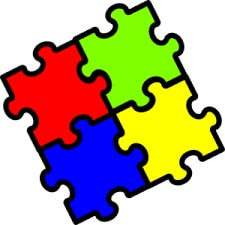
COLOUR COLLECTIONS.
I like to collect words especially ones that are used repeatedly, such as colours.
A fun activity is to see how many different words there are for each of these colours.
If you want to be wacky, why not try to look at paint colours on a decorating website! You will be amazed at how many words that they have come up with!
RED BLUE YELLOW GREEN PURPLE WHITE BLACK
An example could be, red = ruby blue = sapphire yellow = topaz green = sage purple = indigo
Keep the list handy so that you can find the words easily for when you write again.
I like to collect words especially ones that are used repeatedly, such as colours.
A fun activity is to see how many different words there are for each of these colours.
If you want to be wacky, why not try to look at paint colours on a decorating website! You will be amazed at how many words that they have come up with!
RED BLUE YELLOW GREEN PURPLE WHITE BLACK
An example could be, red = ruby blue = sapphire yellow = topaz green = sage purple = indigo
Keep the list handy so that you can find the words easily for when you write again.
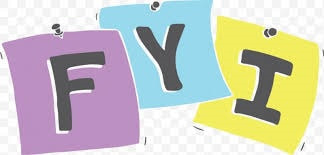
ABBREVIATIONS.
Question.
Do you know what these letters stand for?
Answer:
For Your Information!
When someone uses letters in this way it is called an abbreviation.
Abbreviations are used more and more these days especially when children are texting.
LOL being the most used, along with OMG and BFF following behind.
There are many different abbreviations out there and it may be an interesting activity to find out some more.
Here are some for you to decipher:
Blvd. R.S.V.P. R.A.F. B.C. am kph. dept.
Etc. N.Y. P.O. A.D. pm Mr. H.M
B.B.C. Ave. Sq. Co. P.C. p. or pge.
Why not try to find out some more and add them to your list.
Question.
Do you know what these letters stand for?
Answer:
For Your Information!
When someone uses letters in this way it is called an abbreviation.
Abbreviations are used more and more these days especially when children are texting.
LOL being the most used, along with OMG and BFF following behind.
There are many different abbreviations out there and it may be an interesting activity to find out some more.
Here are some for you to decipher:
Blvd. R.S.V.P. R.A.F. B.C. am kph. dept.
Etc. N.Y. P.O. A.D. pm Mr. H.M
B.B.C. Ave. Sq. Co. P.C. p. or pge.
Why not try to find out some more and add them to your list.
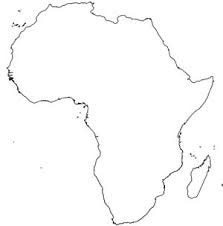
FACTUAL WRITING.
Some children much prefer to do research and write about factual subjects which is great. Here are a few ideas to help them get started.
Children to choose a country of the world such as Spain, France, Italy or even a continent like Africa.
They research 10 fun facts and using a blank outline of a map of their country or continent they fill in the space with their writing.
Obviously, if children find out more information they could write their facts into a paragraph.
This could be done for any topic of their choice.
For example,
Vehicles - Car, Ship, Aeroplane, Submarine
Buildings - Castle Pyramid Buckingham Palace Church/Mosque
Animals - Whale, Giraffe, Cat, Elephant
Some children much prefer to do research and write about factual subjects which is great. Here are a few ideas to help them get started.
Children to choose a country of the world such as Spain, France, Italy or even a continent like Africa.
They research 10 fun facts and using a blank outline of a map of their country or continent they fill in the space with their writing.
Obviously, if children find out more information they could write their facts into a paragraph.
This could be done for any topic of their choice.
For example,
Vehicles - Car, Ship, Aeroplane, Submarine
Buildings - Castle Pyramid Buckingham Palace Church/Mosque
Animals - Whale, Giraffe, Cat, Elephant
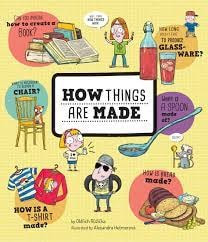
Factual Writing.
You could spend some time researching questions like, How things are made? or Where do things come from?
An interesting question, which I have used in school is, How is chocolate made?
Children could research the journey from the cocoa plant and how it is grown and harvested right through to the process of turning it into a chocolate bar. They could create a booklet, maybe a zig zag one (see an earlier idea) to show what they have found out. Illustrations could also be added.
Here are a few more suggestions:
How is a bar of soap made? How is a guitar made? How is a car made? How are shoes made?
You could spend some time researching questions like, How things are made? or Where do things come from?
An interesting question, which I have used in school is, How is chocolate made?
Children could research the journey from the cocoa plant and how it is grown and harvested right through to the process of turning it into a chocolate bar. They could create a booklet, maybe a zig zag one (see an earlier idea) to show what they have found out. Illustrations could also be added.
Here are a few more suggestions:
How is a bar of soap made? How is a guitar made? How is a car made? How are shoes made?
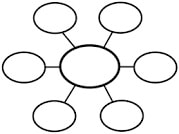
WORD WEBS-CONNECTIONS.
Vocabulary is very important when it comes to writing and creating word banks or word webs is a great way to collect words to help you to write.
Children could be given a selection of generic words like the following:
- Water 2. Night 3. Fireworks 4. Moon 5. Happiness 6. Anger 7.. Sad
Above is a very simple, basic word web.
The main word is written in the middle circle and children add words in the surrounding circles that are connected to it. The number of circles can be increased as soon as the basic web is filled in.
For example, using dark as the main word, these extra words; - black, gloomy, misty, night, jet, coal, could be generated to connect with the word dark.
Ask children to draw their own word web. To make it a little more fun, why not use different colours to write the words!
You could challenge children by giving them a total number of words to collect. Always encourage children to use a dictionary or a thesaurus to help them. Although Internet searches can be fruitful as well.
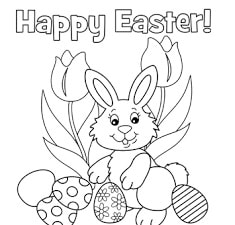
HAPPY EASTER
A very simple challenge today. How many words can you make using the letters from Happy Easter ? You get I point for 3 letter words , 2 points for 4 letter words, 3 points for 5 letter words, 4 points for 6 letter words and so on. Why not challenge members of your family to compete against you. After 10 minutes count up your scores and the winner gets an extra piece of chocolate Easter egg! GOOD LUCK!
A very simple challenge today. How many words can you make using the letters from Happy Easter ? You get I point for 3 letter words , 2 points for 4 letter words, 3 points for 5 letter words, 4 points for 6 letter words and so on. Why not challenge members of your family to compete against you. After 10 minutes count up your scores and the winner gets an extra piece of chocolate Easter egg! GOOD LUCK!

NEWSPAPERS.
When looking for things to write about and you are stuck, try looking at a newspaper. This can be a good place to search for ideas. Here are 5 suggestions:
1. You could read a news story and then re- write it in your own words.
2. You could just look at the headlines and then make up your own story to fit the headline.
3. You could imagine that you were a witness to one of the incidents in the a story and write about what you saw.
4. You could look at the advertisements in the paper and write your own ( advert) for the same product or even create your own product.
5. You could make up an interview with a sport's star from the back pages. What questions would you like to ask? How do you think they would answer?
When looking for things to write about and you are stuck, try looking at a newspaper. This can be a good place to search for ideas. Here are 5 suggestions:
1. You could read a news story and then re- write it in your own words.
2. You could just look at the headlines and then make up your own story to fit the headline.
3. You could imagine that you were a witness to one of the incidents in the a story and write about what you saw.
4. You could look at the advertisements in the paper and write your own ( advert) for the same product or even create your own product.
5. You could make up an interview with a sport's star from the back pages. What questions would you like to ask? How do you think they would answer?
CONVERSATIONS AND "SPEECH."
1. Choose two pictures from one of the sets of pictures above.
2. Be creative and use your imagination to write a conversation that they could be having.
Here are a few examples:
a) Dora talking to Peppa Pig about a walk in the countryside.
b) Mrs. Robin talking to Wally Worm about dinner time.
c) Marge Simpson talking to Wonder- Woman about their hair.
Don't forget to add speech marks or inverted commas when you set out out conversation.
1. Choose two pictures from one of the sets of pictures above.
2. Be creative and use your imagination to write a conversation that they could be having.
Here are a few examples:
a) Dora talking to Peppa Pig about a walk in the countryside.
b) Mrs. Robin talking to Wally Worm about dinner time.
c) Marge Simpson talking to Wonder- Woman about their hair.
Don't forget to add speech marks or inverted commas when you set out out conversation.
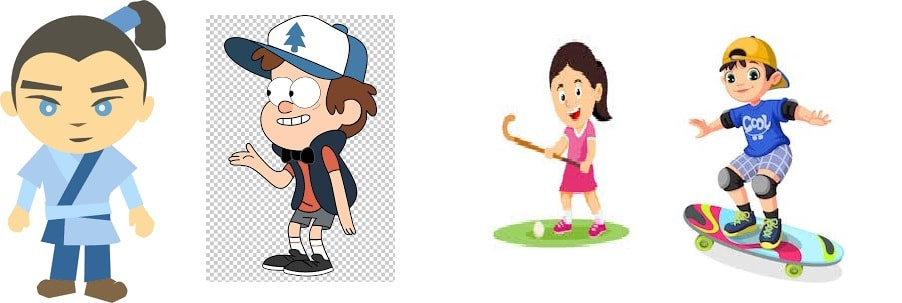
CHARACTERS!
Who they? What are their names? Where do they live? What do they like doing? Who are their friends/enemies? What is their favourite food, tv programme, computer game?
Describe what they are wearing.
Write a story for each character. Maybe you could try to incorporate them all into one story.
Who they? What are their names? Where do they live? What do they like doing? Who are their friends/enemies? What is their favourite food, tv programme, computer game?
Describe what they are wearing.
Write a story for each character. Maybe you could try to incorporate them all into one story.
5 TITLES WITH A DARK SIDE! Write a story in 20 minutes.
1. The Tunnel.
2. The Cave.
3. Space-the final frontier!
4. Underground Retreat.
5. Forest Deep.
1. The Tunnel.
2. The Cave.
3. Space-the final frontier!
4. Underground Retreat.
5. Forest Deep.
5 ADVENTURE TITLES!
1. Lost In The Jungle!
2. Stormchaser!
3. Crash!
4. Chaos At The Campsite!
5. Where's Wally?
1. Lost In The Jungle!
2. Stormchaser!
3. Crash!
4. Chaos At The Campsite!
5. Where's Wally?
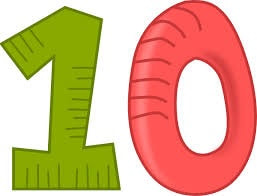
Help! Vocabulary needed!
Some children hate the idea of facing a blank page and often grumble, "I don't know what to write!"
It can be a good idea to give the children 10 words to help them get started.
1. Use the 10 words to write 10 sentences.
2. Use the 10 words in a short story.
Here are a few sets of 10 words. to help them get started.
A. spooky, mansion, haunted, midnight, moon, ghosts, cobwebs, creaking, bats, howls
B. island, gold, treasure, ship, map, pirates, mermaids, fight, cannon, palm -trees
C. park, tree, swing, hospital, dog, old-man, dare, scream, frightened, ambulance
D. monster, sad, party, dress-up, weekend, blue, hairy, scary, friendly, music
E. car, race-track, fast, speed, red, wheels, crowd, roar, Jack, exciting
Now over to you- Good Luck.
Some children hate the idea of facing a blank page and often grumble, "I don't know what to write!"
It can be a good idea to give the children 10 words to help them get started.
1. Use the 10 words to write 10 sentences.
2. Use the 10 words in a short story.
Here are a few sets of 10 words. to help them get started.
A. spooky, mansion, haunted, midnight, moon, ghosts, cobwebs, creaking, bats, howls
B. island, gold, treasure, ship, map, pirates, mermaids, fight, cannon, palm -trees
C. park, tree, swing, hospital, dog, old-man, dare, scream, frightened, ambulance
D. monster, sad, party, dress-up, weekend, blue, hairy, scary, friendly, music
E. car, race-track, fast, speed, red, wheels, crowd, roar, Jack, exciting
Now over to you- Good Luck.
Designing and advertising.
Why not design your own car and add on any special features. Draw and label the car.
You could then develop this drawing in different ways.
For example, you could:
devise your own advert to sell the car.
look at adverts found in newspapers or research some on the internet to help them.
think of a logo or strap line for the car.
you might like to do some role play and create an advert for TV, writing the script and acting it out.
Creating a character.
King Fu Panda is a great film for youngsters to watch. After they have watched it you could suggest that they create their own animal member for the gang, complete with special powers. Children draw the animal and label it with their ideas or you could ask them to write a description of their character. How did they get their powers? How did they become a member of the gang? You could also ask the children which of the gang do they like the best and why? This could be discussion or a written piece. They could write down the pros and cons of each animal in a list to help them to decide.
Describing a feeling.
The Magic Finger by Roald Dahl is a short book and is often missed by readers. It tells the story of a girl who, when she gets angry, her finger becomes magic and she can make things happen when she points it at someone. This would be a great way into writing.
What do you think it would feel like when the magic starts to run through her body towards the finger. Describe this.
Why not be creative and use similes such as, she felt hot like red fiery laser beams or she felt her finger go cold, cold like a frozen iceberg.
What would you point the magic finger at. What makes you angry? Who makes you angry?
In the book she turns the villains into geese! What would you turn your villains into?
Why don't you write your own story about a magic finger?
Or you could read the book and illustrate the main sections of the story using a comic format; simple fold a piece of paper into 4/6 or8 sections. Then draw pictures recounting the story as well as writing a couple of sentences for each one.
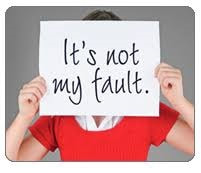
EXCUSES!
We all know how children love to make excuses for doing things when asked so why not use their creativity to help them to write. One suggestion which had worked for me in the past has been the following situation.
You are late for school. Rather than giving the excuse, 'The alarm didn't go off!' or 'I overslept.' or 'The car was stuck in traffic.'
Why not ask the children to invent the most outrageous excuse they can. They could be abducted by aliens or chased by a hungry lion that has escaped from the zoo. They could have fallen down a crater or got lost in a mysterious fog.
The list of ideas is endless and you would be surprised at some of the children's responses. Once they have decided on their excuse, they have to write how they eventually arrived at school.
Later on in the year you may want to try this again with creative excuses for why they didn't do their home work or why they didn't tidy up their bedroom. Hopefully you will receive some interesting and fun pieces of writing.
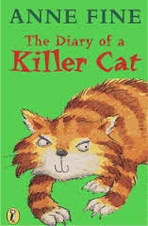
IMITATING A RECOGNISED AUTHOR.
One good way of encouraging children to write is to give them some good examples of writing by an author that they may know or have read. Anne Fine's Diary of Killer Cat is a super introduction to this type of exercise.
She writes in the first person and in the voice of the cat, Fluffy. Read the first chapter with enthusiasm as if you were the cat and the children will love it. Talk about how she starts with short sentences to grab the reader's attention. Talk about the voice of the cat and ask them questions about how the cat is feeling- how do they know? Read the second chapter in the same way and the children will love you for it. This time look at her longer sentences.
Then ask the children, in groups, to brainstorm other activities a cat could do to cause havoc . For example they could climb up the Christmas tree and pull it over or they could play with the Christmas decorations or they could scratch the new furniture or knock over a vase or get stuck in a tree. There are so many to choose.
Then when they have all come up with an idea, ask them to write their pieces in exactly the same way as Anne Fine. I'm sure that you will be delighted with their results.
I have used this exercise with Years 3,4,5,and 6 and have been blown away by their response and the quality of their writing.
You could also connect this to a project on writing about Cats. T.S Eliot's book of poetry called, ' Old Possum's Book of Practical Cats' is a sure fire winner. I have also added a couple of poems that I have written to my poetry page for children, which might be of use.
One good way of encouraging children to write is to give them some good examples of writing by an author that they may know or have read. Anne Fine's Diary of Killer Cat is a super introduction to this type of exercise.
She writes in the first person and in the voice of the cat, Fluffy. Read the first chapter with enthusiasm as if you were the cat and the children will love it. Talk about how she starts with short sentences to grab the reader's attention. Talk about the voice of the cat and ask them questions about how the cat is feeling- how do they know? Read the second chapter in the same way and the children will love you for it. This time look at her longer sentences.
Then ask the children, in groups, to brainstorm other activities a cat could do to cause havoc . For example they could climb up the Christmas tree and pull it over or they could play with the Christmas decorations or they could scratch the new furniture or knock over a vase or get stuck in a tree. There are so many to choose.
Then when they have all come up with an idea, ask them to write their pieces in exactly the same way as Anne Fine. I'm sure that you will be delighted with their results.
I have used this exercise with Years 3,4,5,and 6 and have been blown away by their response and the quality of their writing.
You could also connect this to a project on writing about Cats. T.S Eliot's book of poetry called, ' Old Possum's Book of Practical Cats' is a sure fire winner. I have also added a couple of poems that I have written to my poetry page for children, which might be of use.
WHO LIVES IN A HOUSE LIKE THIS?
Children usually like this exercise because the title is based on a TV programme.
It is a simple description exercise but the choice of house is crucial. The more strange or unusual it is; the more creative the children can be in describing the family or person who might live there.
Encourage the children to use powerful verbs and wow adjectives in an exercise like this. The use of dictionaries and thesauruses should also be encouraged to help them explore new and exciting vocabulary.
Explain to the children what a synonym is and encourage them to use them rather than use the more common word e.g. ancient rather than old.
Children usually like this exercise because the title is based on a TV programme.
It is a simple description exercise but the choice of house is crucial. The more strange or unusual it is; the more creative the children can be in describing the family or person who might live there.
Encourage the children to use powerful verbs and wow adjectives in an exercise like this. The use of dictionaries and thesauruses should also be encouraged to help them explore new and exciting vocabulary.
Explain to the children what a synonym is and encourage them to use them rather than use the more common word e.g. ancient rather than old.
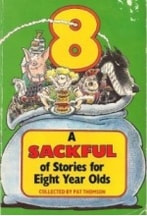
A SACKFUL OF STORIES !
Why don't you create a sackful of stories as a way of keeping children's work. Children can be encouraged to write if they have a purpose and an audience. Each class in the school could create their own set of stories each with a different theme.
Once they have written or published their stories they could be collected together in a pillow case or sack. A design could be painted or printed onto the sack and the sacks could be swapped around the classes; maybe keeping them for two weeks and then passing them.
If you don't want to swap them you could add them to your book corner or library for children to read. I would suggest that this could be built into their reading time or English lesson as well as in their free time.
Why don't you create a sackful of stories as a way of keeping children's work. Children can be encouraged to write if they have a purpose and an audience. Each class in the school could create their own set of stories each with a different theme.
Once they have written or published their stories they could be collected together in a pillow case or sack. A design could be painted or printed onto the sack and the sacks could be swapped around the classes; maybe keeping them for two weeks and then passing them.
If you don't want to swap them you could add them to your book corner or library for children to read. I would suggest that this could be built into their reading time or English lesson as well as in their free time.
VISUAL STIMULUS!
Character descriptions are a good way to encourage children to write and using a picture can be really helpful in getting children started. As with pictures of scenes, locations or places, pictures of people, especially unusual and exotic ones can stimulate children to write. Here you could again start with 10 words then add in senses and then develop with personality traits; likes/ dislikes, enemies and so on.
Obviously these pictures are quite extreme but they do work. Once the children have got use to working with a picture stimulus you could use more ordinary, normal people for them to work on.
Character descriptions are a good way to encourage children to write and using a picture can be really helpful in getting children started. As with pictures of scenes, locations or places, pictures of people, especially unusual and exotic ones can stimulate children to write. Here you could again start with 10 words then add in senses and then develop with personality traits; likes/ dislikes, enemies and so on.
Obviously these pictures are quite extreme but they do work. Once the children have got use to working with a picture stimulus you could use more ordinary, normal people for them to work on.
VISUAL STIMULUS!
Using pictures to help motivate children is a fantastic way to get them writing. The words are already there is some ways. Ask children to write down just 10 words to describe what they see in the picture and you have a paragraph without them really trying.
You can then build on their confidence by developing their work further such as by adding the different senses. This would create a good description piece or be a setting exercise for a story.
Using pictures to help motivate children is a fantastic way to get them writing. The words are already there is some ways. Ask children to write down just 10 words to describe what they see in the picture and you have a paragraph without them really trying.
You can then build on their confidence by developing their work further such as by adding the different senses. This would create a good description piece or be a setting exercise for a story.
Below are a set of bags. Simply ask the children to choose a bag and then write a story which includes the bag in some way.

BRING IN A BAG!
I have used this exercise many times with all year groups in the Junior department of a Primary school but I am sure that it could be used with children of a younger age.
It is really simple; bring in a bag and place it on a table at the front of the room.
You could do this in two ways, bring it in as an exercise and explain what the children have to do or have it in place before you enter the room and be as surprised as they are.
1. Leave it there until children start to ask questions about the bag. Encourage them to discuss, "Why the bag is there, who does it belong to? How do they know?" Ask all of the 5 W questions as well as," How did it get there?"
Children to write down what they have found out. This could be done as a class or as individuals.
2. You could extend this further by adding clues on the outside of the bag such as; a luggage label or a key ring holder or a sticky label which says, "Handle with care!" Again the 5 W questions and How can be answered.
3.You could give the children a questionnaire sheet like an evidence collection sheet, which they can fill in as and when they have an answer. This note taking can help them when they come to write up their final piece of writing.
4. You could put evidence or clues inside the bag. Encourage children to open the bag and see if the evidence is helpful or not.
Children could write an account of the bag.
It could be written as a police report.
It could be a way into writing a newspaper report. Bag Found in School Classroom!
However you choose to do it, it is a fun activity and I have been pleasantly surprised by the imaginative ideas that children have had regarding the bag.
I have used this exercise many times with all year groups in the Junior department of a Primary school but I am sure that it could be used with children of a younger age.
It is really simple; bring in a bag and place it on a table at the front of the room.
You could do this in two ways, bring it in as an exercise and explain what the children have to do or have it in place before you enter the room and be as surprised as they are.
1. Leave it there until children start to ask questions about the bag. Encourage them to discuss, "Why the bag is there, who does it belong to? How do they know?" Ask all of the 5 W questions as well as," How did it get there?"
Children to write down what they have found out. This could be done as a class or as individuals.
2. You could extend this further by adding clues on the outside of the bag such as; a luggage label or a key ring holder or a sticky label which says, "Handle with care!" Again the 5 W questions and How can be answered.
3.You could give the children a questionnaire sheet like an evidence collection sheet, which they can fill in as and when they have an answer. This note taking can help them when they come to write up their final piece of writing.
4. You could put evidence or clues inside the bag. Encourage children to open the bag and see if the evidence is helpful or not.
Children could write an account of the bag.
It could be written as a police report.
It could be a way into writing a newspaper report. Bag Found in School Classroom!
However you choose to do it, it is a fun activity and I have been pleasantly surprised by the imaginative ideas that children have had regarding the bag.
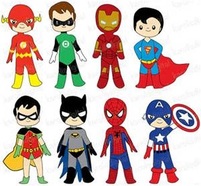
WRITING WITH A THEME.
Motivating children to write can be difficult. However, I have always found that with the correct kind of stimulus, children can show interest and enthusiasm for writing.
Writing to a theme can be used effectively to create a variety of genres. One theme that I have used successfully is that of, Superheroes!
Just showing children a still frame picture of Spiderman from one of his movies can make a classroom buzz. Superheroes appeal to both girls and boys. (There is also a selection of girl superheroes to choose from as well!)
Once the children have chosen their superhero, remember always allow them to discuss the heroes first. This talking can generate both interest and ideas. You can direct them to the genre that you wish to cover in that lesson. or series of lessons.
Here are some ideas:
1. Biography- Most children know the background history of their chosen hero.
2. Character description;-The characters of superheroes are well known. (see an example on my children's writing page about Robin the Boy Wonder!)
3. Speech-Imagine two superheroes meet. What would their conversation be about?
4. Explanation- Explain how the superhero got his or her super power.
5. Story- Children to create their own story after looking at some of the stories already written about their hero. This is a fantastic way of getting children to read either books or comics (nowadays known as graphic novels!)
6. Recount- if you were a superhero what would do all day?
7. Newspaper report- Give children a headline taken from one of the superhero films. Children to write about the incident in the report style.
8. Persuasion:-Children to write about the need for superheroes in the world.
9. Letter- A thank you letter, which explains what the superhero did.
10. The fun one- design your own superhero. What costume would he/she wear? What are their superpowers?
The list could go on. I think by now you will realise that the choice of theme is crucial. Other themes could include; Dinosaurs, Villains, Pirates! Roald Dahl/ JK Rowling characters, Sport's Personalities, and Celebrities.
Motivating children to write can be difficult. However, I have always found that with the correct kind of stimulus, children can show interest and enthusiasm for writing.
Writing to a theme can be used effectively to create a variety of genres. One theme that I have used successfully is that of, Superheroes!
Just showing children a still frame picture of Spiderman from one of his movies can make a classroom buzz. Superheroes appeal to both girls and boys. (There is also a selection of girl superheroes to choose from as well!)
Once the children have chosen their superhero, remember always allow them to discuss the heroes first. This talking can generate both interest and ideas. You can direct them to the genre that you wish to cover in that lesson. or series of lessons.
Here are some ideas:
1. Biography- Most children know the background history of their chosen hero.
2. Character description;-The characters of superheroes are well known. (see an example on my children's writing page about Robin the Boy Wonder!)
3. Speech-Imagine two superheroes meet. What would their conversation be about?
4. Explanation- Explain how the superhero got his or her super power.
5. Story- Children to create their own story after looking at some of the stories already written about their hero. This is a fantastic way of getting children to read either books or comics (nowadays known as graphic novels!)
6. Recount- if you were a superhero what would do all day?
7. Newspaper report- Give children a headline taken from one of the superhero films. Children to write about the incident in the report style.
8. Persuasion:-Children to write about the need for superheroes in the world.
9. Letter- A thank you letter, which explains what the superhero did.
10. The fun one- design your own superhero. What costume would he/she wear? What are their superpowers?
The list could go on. I think by now you will realise that the choice of theme is crucial. Other themes could include; Dinosaurs, Villains, Pirates! Roald Dahl/ JK Rowling characters, Sport's Personalities, and Celebrities.
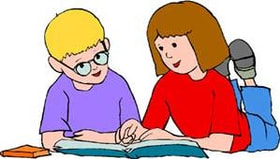
WORKING COLLABORATIVELY.
Some children find it intimidating writing on their own so why not let them work collaboratively in a pair. The ideas should flow when the two of them start to talk about their ideas.
Ask them to jot down ideas first as they talk.
These notes could then be photocopied so that each one has a copy and then ask them to write using the notes. Although, the notes are the same their writing will be different.
Another way of using collaboration to encourage children to write is to ask them to write one sentence or one paragraph at a time. They can talk about it as they write but one child writes down the words and then the next child carries on the storyline. Give the children different coloured pens so that they can keep a record of who writes which part.
Some children find it intimidating writing on their own so why not let them work collaboratively in a pair. The ideas should flow when the two of them start to talk about their ideas.
Ask them to jot down ideas first as they talk.
These notes could then be photocopied so that each one has a copy and then ask them to write using the notes. Although, the notes are the same their writing will be different.
Another way of using collaboration to encourage children to write is to ask them to write one sentence or one paragraph at a time. They can talk about it as they write but one child writes down the words and then the next child carries on the storyline. Give the children different coloured pens so that they can keep a record of who writes which part.
PUTTING PEN TO PAPER.
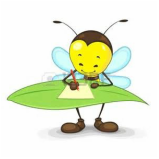
Use post it notes to write on. They are small and won’t intimidate children into thinking that they have to write lots of words in an exercise book. The post it notes could then be re arranged into an order so that children can organise their writing easily, rather than having to re write their ideas.
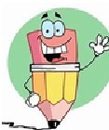
Use a story board template of either, 4, 6 or 8 blocks depending on the child. These small spaces for writing can be filled up quickly. The children can see quite clearly how they fill a page this way. This can be less daunting to the reluctant writer than writing on a A4 piece of a paper.
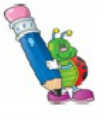
Use large paper like display paper rather than A4 writing paper. This can encourage children to write big and bold and can help them to free up their ideas and loosen them up. It doesn’t matter what it looks like at the moment, getting words on a page is the most important thing. Tidying up can come when children re-visit their work.

Ask children to use different coloured pens or felt tips rather than their normal pen or pencil. Colour and the novelty of using it can be a treat and motivate children to write more. This activity is a great way to get down a first rough draft.

Sometimes just giving children a different type or colour of paper with a text box of lines or a picture to help them keep focused on their writing can motivate children to write. Variety is the spice of life especially for children. You could add a list of words that they could use in their writing as well. Children are given praise or a reward for using all the words.

Children are allowed to draw pictures instead of words to help keep their interest. Obviously you have to give them a guide line such as every 10th word could be a picture or they could draw a picture after 5 sentences.

Why not cut a small, A5 exercise book into half, horizontally across the middle. Children can now have the small pages to write on but a book to write in. This is a great way to publish children’s writing. The books could be covered with plain paper and then a book cover designed, and coloured in. Children could do their own illustrations as well. At the start; one page of writing, one page is a picture then as you use this technique over a period of time the pictures become less and the writing more.
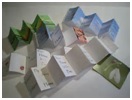
Zig - Zag books are great fun to make and again the small space for writing is ideal to help encourage children to write.
Proudly powered by Weebly
